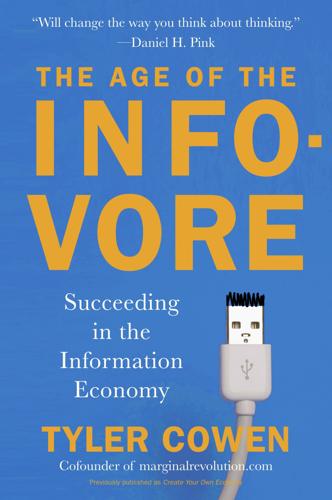
The Age of the Infovore: Succeeding in the Information Economy
by
Tyler Cowen
Published 25 May 2010
Behavioral economists sometimes write of human beings as subject to “framing effects,” meaning that the presentation of the alternatives influences our choices. For instance we often choose more conservatively if the very same opportunity is described to us as a gain of something rather than as a loss of something. Or the presence of a very-high-calorie item on a menu—which we don’t order—makes us feel less guilty about later getting dessert. Usually the presumption is that framing effects are to be avoided. To be sure, many framing effects are irrational but framing effects help put the guts into our lives. We spend time and energy framing things in the right way so that we can enjoy them more or learn more from them.
…
Facebook isn’t the only framing device out there and you can direct your attention elsewhere to offset any unwanted biases of Facebook. Framing effects are not just one-off influences but rather we choose them from a broad portfolio of options. We mix and match framing effects as we see fit, and so it is again a mistake to focus on the cognitive biases uncovered in stand-alone experiments under lab conditions. If there is any important bias in human affairs, it is again the überbias of choosing which framing effects to enjoy. When it comes to friendship, I’m not so worried that people will choose the framing effects that make all their close friends go away. Again, a networked world is very often an intimate world.
…
The web is strengthening the aspects of your identity that are fact-based and easy to spell out in very direct language. Finally, framing effects are more important than ever before. Some experiences, and some goods and services, are more subject to framing effects than others. If someone shoots you in the heart with a bullet, framing effects probably don’t much matter. You’re going to die, and if you survive the immediate impact it’s going to be unpleasant, no matter what your attitude. If you give a hungry man food, he is going to enjoy it no matter how it is framed; Cicero wrote, “Hunger is the best sauce.” The more visceral the experience, the less likely it is that framing effects will make a big difference for your pain or enjoyment.
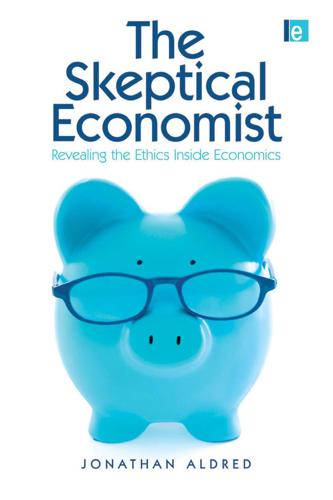
The Skeptical Economist: Revealing the Ethics Inside Economics
by
Jonathan Aldred
Published 1 Jan 2009
Essentially the same set of options can be perceived very differently, leading to completely different choices, due to framing effects, so-called because they concern the context or frame through which a person perceives a decision. A box of Razzle Dazzle can be perceived as expensive (if we remember that it cost less a month ago) or cheap (if the retailer displays it as being on ‘special offer’). You may feel confident that you are not fooled by such simple retailing ploys (you always ignore ‘special offer’ claims when assessing price) but framing effects are pervasive and not always so obvious. Framing effects: Two examples Merely because an option is framed as the default option - one that will be selected unless the chooser actively decides otherwise - it is much more likely to be ‘chosen', even when the decision is important.
…
We all know the danger of buying more food than intended when shopping on an empty stomach, a danger confirmed by psychological evidence.10 Similarly, catalogue shoppers ordering by telephone seem overly influenced by the current weather: warm clothes ordered on cold days are more likely to be returned later.11 And many people join gyms and health clubs which they subsequently rarely use, because at the time of joining they focus on the health benefits, rather than how they will feel in the future when visiting the gym.12 A form of framing effect also distorts our predictions of future satisfaction. Suppose you are trying to decide between two equally expensive pairs of stereo speakers. In the audio shop, you will probably put great weight on which sounds better, and purchase on that basis, even though the differences are likely to be small.
…
Economic theory prescribes that we should reach the same decision about whether to see the show, regardless of whether we discover outside that we have lost $40 cash or a $40 ticket. We are supposed to choose solely on the basis of the material benefits and costs involved, and not be influenced by framing effects, the context of the choice. Does our self-interest demand this type of ‘consistency’? Context matters. Even if the net financial impacts in two situations are identical, most of us distinguish them. Losing $40 cash is seen as one of life’s minor misfortunes that inevitably befall us, with no implications for whether we see the show.
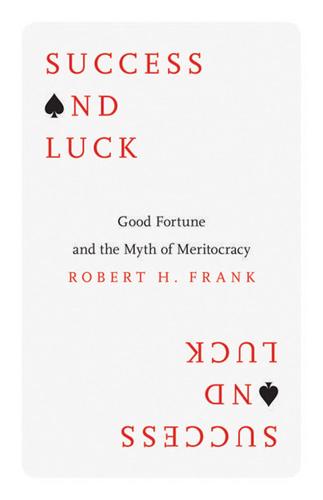
Success and Luck: Good Fortune and the Myth of Meritocracy
by
Robert H. Frank
Published 31 Mar 2016
Standard economic models assume that each person’s spending is completely independent of what others spend. But if framing effects matter, that can’t be right. People spend more when their friends and neighbors spend more. This isn’t some fantastic new discovery. It’s a dynamic we’ve known about since the dawn of time. Many have called it “keeping up with the Joneses.” But I’ve never liked that expression, because it summons images of insecure people trying to appear wealthier than they are. Peer influences would in fact be just as strong in a world completely free of jealousy and envy. Rising inequality has made framing effects stronger. The median new house in the United States is now 50 percent larger than it was in 1980, even though the median income has grown only slightly in real terms.
…
But the profound implications of that simple fact have largely escaped the attention of economists and have not yet been fully grasped by behavioral scientists in other disciplines. If those implications are any clearer to me, it’s only because having lived for two years in one of the world’s poorest countries led me to focus so intently on these “framing effects” during the ensuing decades. Sticking with my write-what-you-know theme, the most striking lesson of my experience in Nepal was that despite the dramatically lower material living standards there, my experience of day-to-day life was astonishingly similar to what I’d been used to. When I write, for example, that the same two-room house with no plumbing or electricity that seemed completely satisfactory to me there would seem shamefully inadequate in any American middle-class neighborhood, I’m merely writing what I know.
…
According to one recent study, however, it appears to have made them more likely to divorce.11 The economists Andrew Francis and Hugo Mialon estimated, for example, that couples who spent more than $20,000 on their weddings were more than 12 percent more likely to divorce during any given year than were those who spent between $5,000 and $10,000. Framing effects have spawned waste in a second way by creating a powerful bias in favor of private consumption over public investment. The basic idea is captured in a simple example involving cars and highways. Everyone agrees that cars would be of little use without roads and that roads would be of little use without cars.
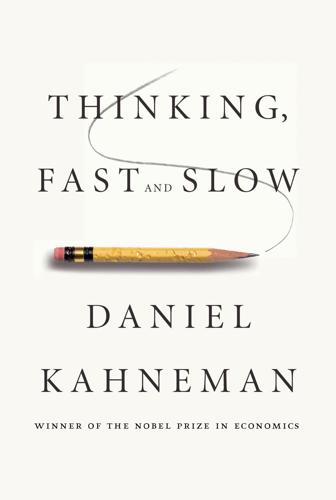
Thinking, Fast and Slow
by
Daniel Kahneman
Published 24 Oct 2011
These enormous differences are a framing effect, which is caused by the format of the critical question. The high-donation countries have an opt out form, where individuals who wish not to donate must check an appropriate box. Unless they take this simple action, they are considered willing donors. The low-contribution countries have an opt-in form: you must check a box to become a donor. That is all. The best single predictor of whether or not people will donate their organs is the designation of the default option that will be adopted without having to check a box. Unlike other framing effects that have been traced to features of System 1, the organ donation effect is best explained by the laziness of System 2.
…
This section of the book provides a current view, informed by the two-system model, of the key concepts of prospect theory, the model of choice that Amos and I published in 1979. Subsequent chapters address several ways human choices deviate from the rules of rationality. I deal with the unfortunate tendency to treat problems in isolation, and with framing effects, where decisions are shaped by inconsequential features of choice problems. These observations, which are readily explained by the features of System 1, present a deep challenge to the rationality assumption favored in standard economics. Part 5 describes recent research that has introduced a distinction between two selves, the experiencing self and the remembering self, which do not have the same interests.
…
I return to the virtues of educating gossip and to what organizations might do to improve the quality of judgments and decisions that are made on their behalf. Two articles I wrote with Amos are reproduced as appendixes to the book. The first is the review of judgment under uncertainty that I described earlier. The second, published in 1984, summarizes prospect theory as well as our studies of framing effects. The articles present the contributions that were cited by the Nobel committee—and you may be surprised by how simple they are. Reading them will give you a sense of how much we knew a long time ago, and also of how much we have learned in recent decades. Part 1 Two Systems The Characters of the Story To observe your mind in automatic mode, glance at the image below.
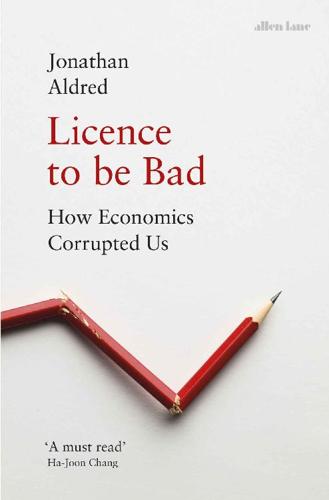
Licence to be Bad
by
Jonathan Aldred
Published 5 Jun 2019
Policy A has the same outcome as policy C, and B has the same outcome as D. The exact wording or framing of the alternatives alters people’s choices; these framing effects turn out to be ubiquitous in a wide range of decision contexts. For psychologists, this was not surprising: of course our decision-making is affected by how the alternatives are described. But it was shocking news for orthodox economists. With their careful, meticulous experiments, Kahneman and Tversky forced economists to accept the reality of framing effects. And they had an equally powerful impact on how most economists thought about incentives. First, Kahneman and Tversky made economists much more accepting of the possibility that incentives can be counterproductive.
…
Kahneman and Tversky’s crucial contribution was to develop an explanation for what economists had previously called irrationality, in effect an entire theory of irrationality. This rescued crowding out from being an embarrassing anomaly: now it was just one among many types of ‘irrational’ human behaviour. Second, some economists saw in Kahneman and Tversky’s framing effects an explanation of how incentives sometimes backfire and sometimes don’t. Incentives which are identical as far as economic theory is concerned – the same monetary value, and so on – can produce different results, depending on how they are described or framed. Third, accepting the reality of counterproductive incentives suggested that another approach to policy-making was needed.
…
Unlike the pregnant women, blood donors seem unlikely to tell their peers that they are motivated by money, even if that’s the truth. Behavioural economists and other incentive designers need to be able to distinguish the pregnant women from the blood donors, so moral complexity and ambiguity cannot be ignored. That means going beyond labelling different descriptions of different situations as mere ‘framing effects’ and going beyond welfare maximization as the definition of what people want and what is best for society. We can get another perspective on the morality of incentives by contrasting them with rewards and punishments. There is a big difference. We don’t say that athletes are ‘incentivized’ to win Olympic medals, because medals are rewards for excellence, not incentives.
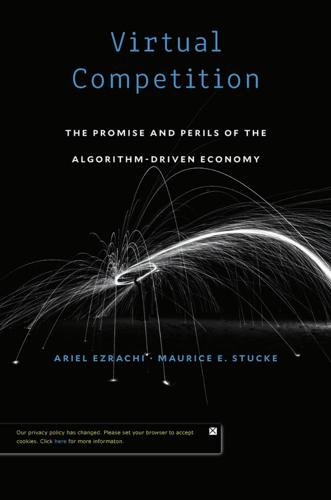
Virtual Competition
by
Ariel Ezrachi
and
Maurice E. Stucke
Published 30 Nov 2016
Coupon site Rather-be-shopping.com, for example, “found 17 well-known retailers (including Bed, Bath & Beyond, Macy’s, and Williams-Sonoma) that offered coupons (ranging from 20% off to free shipping) to customers who left their carts.”49 Minimize the Perceived Unfairness through Framing Effects Many consumers, as the next chapter discusses, feel cheated by price discrimination. They are deprived of a market price. To address this, firms can rely on framing effects when price discriminating. The behavioral economics literature suggests that “framing effects” (how the issue is worded or framed) do matter.50 Here the price discrimination is framed not as consumers paying more, but rather as some getting a discount. Credit cards are one example.
…
The stability needed for tacit collusion is enhanced by the fact that computer algorithms, while not trusting, are unlikely to exhibit other human biases. Human biases can always be reflected in the programming code, but if some biases are minimized (such as loss aversion, the sunk cost fallacy, and framing effects), the algorithm acts consistently on more deliberative analysis, rather than intuition.14 Unlike humans, the computer does not fear detection and possible financial penalties or incarceration; nor does it respond in anger. The computer can quantify the payoffs that are likely achievable through cooperation in future games, and opt for forbearance rather than punishing small deviations.
…
See also Comparison intermediaries; Price discrimination Behavioral discrimination, “almost perfect,” 30, 101–116, 289n1; biases used to increase consumer demand, 105–113; personal data and informational asymmetries, 112–115, 294n62; self-learning algorithms and, 101–103; targeting and categorization and, 103–105 Behavioral discrimination, economic and social perspectives on, 117–130, 234; actual discrimination and, 124–127, 129; complexity of, 119–121; economic incentives and, 228–229; enforcement issues, 127–128, 219, 221, 300n47, 301nn48,50, 302nn55,56; fairness and equality lacking with, 123–124, 129; neoclassical economists and price discrimination, 117–119, 295nn4–9, 297n12; personal assistants and, 191, 195–196; positive feedback loop and private data, 236–238; privacy concerns and, 129–130, 227; social acceptance and, 121–122, 129, 130, 303n60; wealth inequality and, 241 Behavioral economics, 97–98, 105 Behavioral experiments, intermediaries and, 42–44 Benchmark interest rates/exchange rates, Messenger collusion scenario and, 40, 269nn7,9 Biases, exploiting to increase consumer demand, 105–113; decoy products, 106–107; drip pricing, 109–110; framing effects, 111–113; imperfect willpower, 110–111; increased complexity, 108–109; price steering, 107–108 Big Data and Big Analytics, competitive environment changes and, 11–21; Amazon’s business practices and, 12–15, 255n8, 257n34; Big Analytics defi ned, 15; Big Data’s four Vs, 15, 20; cloud computing and Internet of Things, 18; emerging trends and industry transformations, 19–21; as mutually reinforcing, 16, 259n47; online marketplace growth and, 15–18 BlackBerry, 149 Black Friday shopping, 19–20 Bloomberg, 155 BNP Paribas, 269n9 Boise Cascade Corp. v.
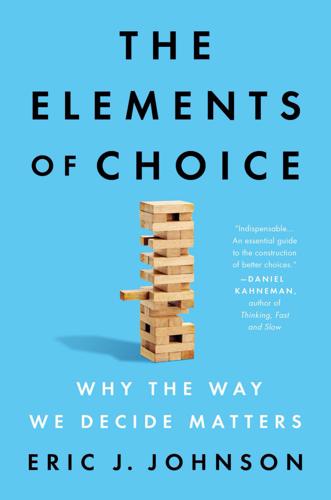
The Elements of Choice: Why the Way We Decide Matters
by
Eric J. Johnson
Published 12 Oct 2021
We will use query theory later in the book, but if you want to read more, you might want to look at Johnson, Häubl, and Keinan, “Aspects of Endowment: A Query Theory of Value Construction”; Weber et al., “Asymmetric Discounting in Intertemporal Choice.” 13. Payne et al., “Life Expectancy as a Constructed Belief: Evidence of a Live-to or Die-by Framing Effect.” Annuities use the payments of those who die young to pay for the benefits of those who die old. You need to be a good actuary to sell annuities. 14. Partners Advantage, “Getting Your Prospect to Think About Longevity, and Longevity Calculators.” 4. Goals of Choice Architecture 1.
…
Description of Kipchoge’s achievement is from Keh, “Eliud Kipchoge Breaks Two-Hour Marathon Barrier”; Pope and Simonsohn, “Round Numbers as Goals”; Heath, Larrick, and Wu, “Goals as Reference Points.” Figure and marathon results are from Allen et al., “Reference-Dependent Preferences: Evidence from Marathon Runners.” 11. “Envision Version 2.0: A Rating System for Sustainable Infrastructure”; Shealy et al., “Using Framing Effects to Inform More Sustainable Infrastructure Design Decisions.” 12. Beko, “Freestanding 7kg Condenser Tumble Dryer DCX71100.” The picture describes a Freestanding 7kg Condenser Tumble Dryer DCX71100. 13. Musicus et al., “Online Randomized Controlled Trials of Restaurant Sodium Warning Labels.” 14.
…
For other examples of default neglect, see Robinson et al., “Some Middle School Students Want Behavior Commitment Devices (but Take-Up Does Not Affect Their Behavior)”; Bergman, Lasky-Fink, and Rogers, “Simplification and Defaults Affect Adoption and Impact of Technology, but Decision Makers Do Not Realize It.” 11. This result is described in Brown, Kapteyn, and Mitchell, “Framing Effects and Social Security Claiming Behavior.” 12. The original study is Halpern et al., “Default Options in Advance Directives Influence How Patients Set Goals for End-Of-Life Care.” The result was largely replicated in Halpern et al., “Effect of Default Options in Advance Directives on Hospital-Free Days and Care Choices among Seriously Ill Patients.”
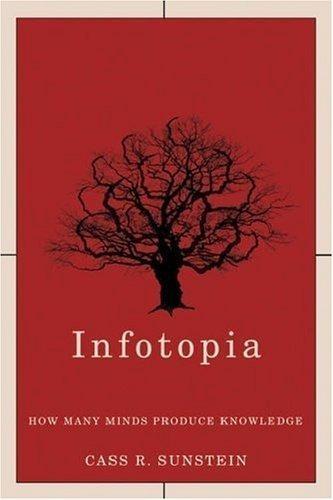
Infotopia: How Many Minds Produce Knowledge
by
Cass R. Sunstein
Published 23 Aug 2006
After the 2005 disaster produced by Hurricane Katrina in the United States, it was predictable that significant steps would be taken to prepare for hurricanes—and also predictable that before that disaster, such steps would be quite inadequate. 76 / Infotopia Most people are also strikingly vulnerable to framing effects, making different decisions depending on the wording of the problem. Consider the question whether to undergo a risky medical procedure. When people are told, “Of those who have this procedure, 90 percent are alive after five years,” they are far more likely to agree to the procedure than when they are told, “Of those who have this procedure, 10 percent are dead after five years.”5 People also follow the representativeness heuristic, in accordance with which our judgments of probability are influenced by assessments of resemblance: the extent to which A “looks like” B.6 If A does indeed look like B, we are more likely to think that A causes B, or vice versa.
…
by placing him at the scene of the crime; perhaps the jury’s bias is a product of the unappealing physical appearance of the defendant (not a famous movie star). If so, the many minds on the jury are likely to amplify rather than to correct those biases.9 Deliberating groups have also been found to amplify, rather than to attenuate, reliance on the representativeness heuristic.10 Such groups fall prey to even larger framing effects than individuals, so that when the same situation is described in different terms, groups are especially likely to be affected by the redescriptions.11 Groups show more overconfidence than group members;12 78 / Infotopia they are even more affected by the biasing effect of bad arguments from lawyers.13 In an especially revealing finding, groups have been found to make more, rather than fewer, conjunction errors (believing that A and B are more likely to be true than A alone) than individuals when individual error rates are high—though fewer when individual error rates are low.14 Groups do demonstrate a decreased level of reliance on the availability heuristic, but the decrease is slight, even when use of that heuristic leads to clear errors.15 Here’s a disturbing finding, one with great relevance to group behavior in both politics and business: Groups are more likely than individuals to escalate their commitment to a course of action that is failing—and all the more so if members identify strongly with the groups of which they are a part.16 There is a clue here about why companies, states, and even nations often continue with projects and plans that are clearly going awry.
…
Paul Slovic, The Perception of Risk (London: Earthscan Publications, 2000), 37–48. Notes to Pages 70–76 / 241 4. Ibid., 40. 5. See Donald A. Redelmeier et al., “Understanding Patients’ Decisions: Cognitive and Emotional Perspectives,” Journal of the American Medical Association 270 (1993): 73 (discussing framing effects in medical context). 6. Amos Tversky and Daniel Kahneman, “Extensional versus Intuitive Reasoning: The Conjunction Fallacy in Probability Judgment,” in Gilovich et al., Heuristics and Biases, 19, 22–25 (discussing representativeness). 7. See Amos Tversky and Daniel Kahneman, “Judgment under Uncertainty: Heuristics and Biases,” in Judgment under Uncertainty: Heuristics and Biases, ed.
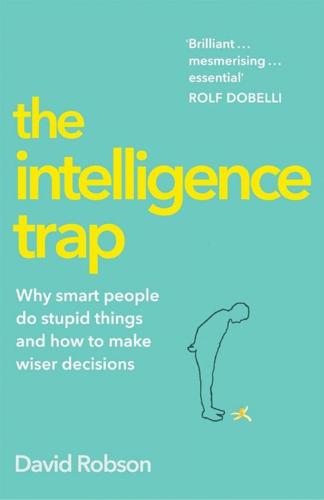
The Intelligence Trap: Revolutionise Your Thinking and Make Wiser Decisions
by
David Robson
Published 7 Mar 2019
The sunk cost bias also showed almost no relationship to SAT scores in another study.13 Gui Xue and colleagues at Beijing Normal University, meanwhile, have followed Stanovich’s lead, finding that the gambler’s fallacy is actually a little more common among the more academically successful participants in his sample.14 That’s worth remembering: when playing roulette, don’t think you are smarter than the wheel. Even trained philosophers are vulnerable. Participants with PhDs in philosophy are just as likely to suffer from framing effects, for example, as everyone else – despite the fact that they should have been schooled in logical reasoning.15 You might at least expect that more intelligent people could learn to recognise these flaws. In reality, most people assume that they are less vulnerable than other people, and this is equally true of the ‘smarter’ participants.
…
They keep on ruminating about the time they would lose, and so they try in vain to make the best of it – even though the scenario makes it pretty clear that they’ll have to spend the vacation in discomfort as a result. Bruine de Bruin, however, has found that this is not true of the people who can think more reflectively about their feelings in the ways that Feldman Barrett and others have studied.22 A Romanian study has found similar benefits with the framing effect. In games of chance, for instance, people are more likely to choose options when they are presented as a gain (i.e. 40 per cent chance of winning) compared with when they are presented as a loss (60 per cent chance of losing) – even when they mean exactly the same thing. But people with more sophisticated emotion regulation are resistant to these labelling effects and take a more rational view of the probabilities as a result.23 Being able to reappraise our emotions has also been shown to protect us against motivated reasoning in highly charged political discussions, determining a group of Israeli students’ capacity to consider the Palestinian viewpoint during a period of heightened tension.24 It should come as little surprise, then, that an emotional self-awareness should be seen as a prerequisite for the intellectually humble, open-minded thinking that we studied in the last chapter.
…
Linguists and writers have long known that our emotional experience of a second language will be very different from that of our mother tongue; Vladimir Nabokov, for instance, claimed to feel that his English was ‘a stiffish, artificial thing’ compared to his native Russian, despite becoming one of the language’s most proficient stylists: it simply didn’t have the same deep resonance for him.39 And this is reflected in our somatic markers, like the sweat response: when we hear messages in another language, the emotional content is less likely to move the body. Although that may be a frustration for writers such as Nabokov, Boaz Keysar at the University of Chicago’s Center for Practical Wisdom has shown that it may also offer us another way to control our emotions. The first experiment, published in 2012, examined the framing effect, using English speakers studying Japanese and French, and Korean speakers learning English. In their native languages, the participants were all influenced by whether the scenarios were presented as ‘gains’ or ‘losses’. But this effect disappeared when they used their second language. Now, they were less easily swayed by the wording and more rational as a result.40 The ‘foreign language effect’ has since been replicated many times in many other countries, including Israel and Spain, and with many other cognitive biases, including the ‘hot hand illusion’ – the belief, in sport or gambling, that success at one random event means we are more likely to have similar luck in the future.41 In each case, people were more rational when they were asked to reason in their second language, compared with their first.
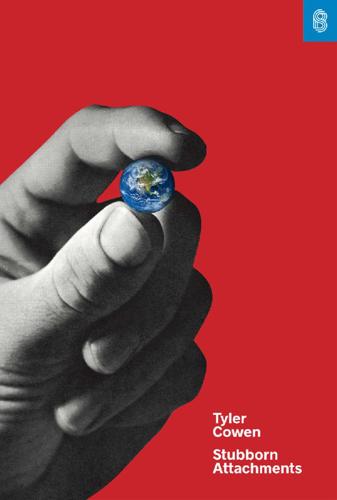
Stubborn Attachments: A Vision for a Society of Free, Prosperous, and Responsible Individuals
by
Tyler Cowen
Published 15 Oct 2018
But it is unlikely that treadmill effects “eat up” all of the happiness gains from greater wealth. Along the lines of the Kenya example, growing wealth also causes people to recalibrate their language and affects how they would respond to questions about their happiness. If happiness itself is subject to framing effects, surely talk about happiness is subject to framing effects as well; if anything, it may be easier to recalibrate your language than to recalibrate your expectations of happiness. The wealthy develop higher standards for when they consider themselves to be “happy” or “very happy.” If you are a millionaire living next door to a billionaire, you might be less likely to report that you are ecstatically well-off, even though your day-to-day existence is pretty sweet.
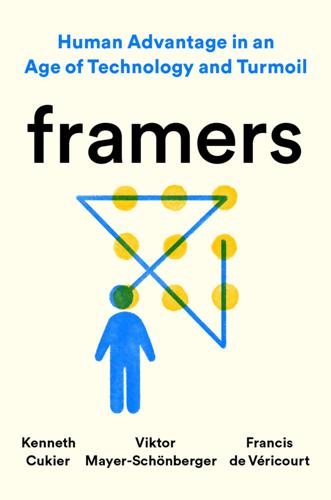
Framers: Human Advantage in an Age of Technology and Turmoil
by
Kenneth Cukier
,
Viktor Mayer-Schönberger
and
Francis de Véricourt
Published 10 May 2021
Thomas Edison in the early 1900s believed motion pictures would replace classrooms—a vision only realized a century later when Zoom became the new schoolhouse. The term framing is well established in the social sciences. The psychologists Daniel Kahneman and Amos Tversky eloquently explained how different characterizations of outcomes influence decision-making—which they called the “framing effect,” and described it as a flaw in human reasoning. Though we share the same term, the meaning here is somewhat different: not how something is positioned but a deliberate act of harnessing mental models to elicit options prior to making a decision. Although the misframing of a situation can certainly lead to flawed decisions, framing is a valuable and empowering human capability.
…
Rosen, “The Magical, Revolutionary Telephone,” Atlantic, March 7, 2012, https://www.theatlantic.com/technology/archive/2012/03/the-magical-revolutionary-telephone/254149/; “History of the Cylinder Phonograph,” Library of Congress, accessed November 10, 2020, https://www.loc.gov/collections/edison-company-motion-pictures-and-sound-recordings/articles-and-essays/history-of-edison-sound-recordings/history-of-the-cylinder-phonograph/. On Edison and education: Todd Oppenheimer, The Flickering Mind: Saving Education from the False Promise of Technology (New York: Random House, 2004). On Kahneman and Tversky’s “framing effect”: Amos Tversky and Daniel Kahneman, “The Framing of Decisions and the Psychology of Choice,” Science 211, no. 4481 (January 30, 1981): 453–58. On Kuhn’s “paradigm shift”: Thomas S. Kuhn, The Structure of Scientific Revolutions (Chicago: University of Chicago Press, 1962). On the origin of art perspective: Giorgio Vasari, “The Life of Filippo Brunelleschi, Sculptor and Architect,” in The Lives of the Artists, trans.
…
See also causality; constraints; counterfactuals; mental models agility of mind as undergirding, 217 AI as reinforcing significance of, 211 AI’s inability to do, 44, 45–46 to allow adaptation and survival, 21 attention to agency and, 107 being open-minded and, 204 conditions for, 221 dangers of poor, 214–215 described, 4–5, 36–38 efficiency and, 110, 144 emotionalists as poor at, 210 as empowering agency, 27 as enabling creativity and imagination, 26, 33 envisioning alternative realities and, 9, 79, 90, 94 as fundamental to decision-making, 5, 8 as fundamental to human cognition, 5, 25 governments, 29–30 homophily and, 89, 162, 234 humans cannot stop, 46 as liberating, 27 magnification of certain elements and minimization of others, 6 need for flexibility in, 214 oppression and, 175–176 other terms for, 25 as process, 39 processes involved in, 208–209 as subconscious action, 8 technology’s inability to do, 17–18, 44, 45–46 terrorists and, 213–214 uniformity as end of successful, 207 “framing effect,” 10 Francis I (king of France), 169 Freud, Sigmund, 25, 80 Frisch, Otto, 133 Fukuyama, Francis, 20, 181 Fung, Inez, 75–76, 168 Gabriel, Peter, 112 Gazzaniga, Michael, 62–63 Gehry, Frank, 102–103 Geisel, Theodor Seuss, 101–102, 103 gene editing, 137 generalization.
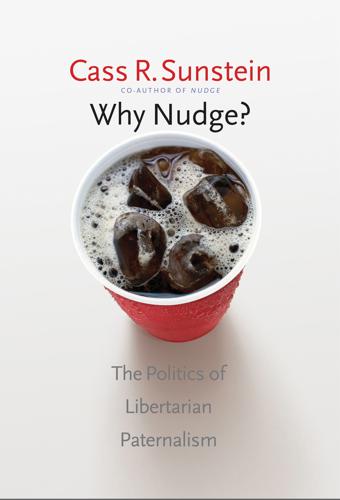
Why Nudge?: The Politics of Libertarian Paternalism
by
Cass R. Sunstein
Published 25 Mar 2014
If people face a five-cent tax for using a plastic bag (a loss), they are much more likely to be affected than if they are given a five-cent bonus (a gain) for bringing their own bag.8 In response to questions, people persistently show both framing effects and loss aversion. (There is a nice lesson here for policymakers. If you want to have an impact, choose effective frames and enlist loss aversion. Is it paternalistic for policymakers to heed that lesson? Before you answer “yes,” note that some kind of framing is inevitable.) Now assume that people are answering those same questions in a foreign language—that is, a language that they speak, but in which they are not entirely comfortable. Here is the key finding: It turns out that they do not show either framing effects or loss aversion.9 Asked to resolve problems in a language that is not their own, people are less likely to depart from standard accounts of rationality.
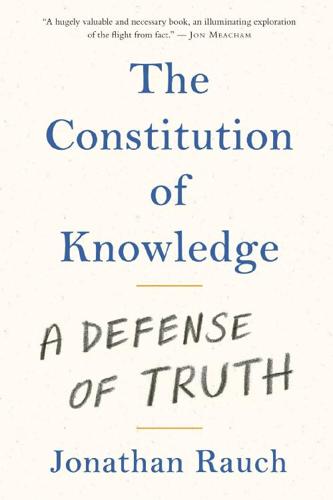
The Constitution of Knowledge: A Defense of Truth
by
Jonathan Rauch
Published 21 Jun 2021
“A solid group of 100 or so [cognitive] biases has been repeatedly shown to exist, and can make a hash of our lives,” writes Ben Yagoda in The Atlantic.5 They include, just for example: optimism bias, the tendency to overestimate our chances of success, availability bias, a tendency to overestimate the likelihood of phenomena which stick in our minds (terrorist attacks; child kidnappings), familiarity bias (or repetition bias), a tendency to believe things which we hear often (in fact, even debunking a false claim, by repeating it, can make it more familiar and thus more believable), fluency bias, a tendency to believe statements which are easy to understand and assimilate (we are more likely to believe unaccented speakers, statements written in large, bold, or high-contrast fonts, aphorisms which rhyme, and statements accompanied by photos, even if the photos convey no relevant information), the illusion of asymmetric insight, which leads us to presume that we understand others’ thinking and motives better than they understand ours, the gambler’s fallacy, which leads us to expect that if a flipped coin comes up heads five times in a row, it is more likely to come up tails the sixth time, the anchoring effect, a tendency to over-emphasize the first piece of information offered, framing effects, a tendency to be influenced by the way content is presented to us, superiority bias, a tendency to overestimate how competent we are, source confusion, a tendency to misattribute where we learned information and how we know what we think we know, and perseverance bias, a tendency to hold onto beliefs despite disconfirming evidence.
…
Terrorists, who are skilled psychologists, exploit our hard-wired overreaction to spectacular acts of violence, even though the numbers they kill are statistically trivial compared with everyday losses to things like car crashes and street crime.6 Osama bin Laden explained the principle: “All that we have to do is to send two mujahedeen to the furthest point east to raise a piece of cloth on which is written ‘al Qaeda’ in order to make generals race there to cause America to suffer human, economic, and political losses.”7 Propagandists, also skilled psychologists, exploit repetition bias by repeating lies until they sound familiar, and by baiting the outraged targets of lies to repeat them even more. (As Adolf Hitler in Mein Kampf put it, propaganda “must confine itself to a few points and repeat them over and over.… [P]ersistence is the first and most important requirement for success.”) Advertisers, who may be the best psychologists of all, are virtuosos at exploiting framing effects, using images and associations to influence our attitudes before the first word of the pitch has been uttered. Even when their manipulations are blatant (the flag waving in the opening frames of the political ad; the puppy cavorting with the happy senior in the ad for arthritis medicine), we cannot entirely resist them.
…
See also disinformation; misinformation; trolls and trolling fallibilism: conspiracy theories and, 167; falsification and, 58–60; knowledge and, 58–60, 88–89; marginalizing bad ideas under, 258–60; Mill’s On Liberty and, 192; network epistemology and, 94, 95; as rule for reality, 88–92, 103; Trumpism vs., 182; Wikipedia and, 143 falsification, 58–60, 99 familiarity bias, 26 Faris, Robert, 164, 178–79 Fauci, Anthony, 241 Federalist Papers, 80–82, 84, 112, 119, 190–91 Federation of State Medical Boards, 66 Ferguson, Niall, 120 Fernbach, Philip: The Knowledge Illusion (with Sloman), 34, 72 Filloux, Frederic, 137 First Amendment, 12, 168, 198, 200, 201, 235, 237, 250 Fleming, Alexander, 67 Florey, Howard, 67 fluency bias, 26 Foer, Sam, 12–13, 19, 244 Foundation for Individual Rights in Education (FIRE), 19, 243–44, 250 Founding Fathers, 112, 115, 156–57. See also specific individuals 4chan, 135, 158 Fox News, 177–79 framing effects, 26 Frankfurt, Harry: “On Bullshit,” 107 Franklin, Benjamin, 48, 121 freedom and freedom of expression: cancel culture and, 11–14, 217–20, 238; conformity as threat to, 193; defense of, 96, 243–46, 250–51; emotional safetyism vs., 203–09; Enlightenment and, 57; fallibilism and, 95–96, 105–06; liberalism and, 48, 75–78; Mill’s On Liberty and, 192; minority oppression and, 251–55; robustness of, 18–19; rules for reality and, 91 French Revolution, 44 Friedersdorf, Conor, 214, 242 fundamentalism, 199 Gaddafi, Saif, 168 gambler’s fallacy, 26 Gamergate, 158 gay people.

Markets, State, and People: Economics for Public Policy
by
Diane Coyle
Published 14 Jan 2020
Experiments have shown that cutting the price from a few pennies to zero can have a dramatic effect on take-up, making the loss of revenue worthwhile given the impact on health outcomes. Researchers argue that a zero price conveys additional information, that the activity is socially expected, introducing a framing effect. Impact of small fees on take-up. Source: Abdul Latif Jameel Poverty Action Lab, https://www.povertyactionlab.org/sites/default/files/publications/The%20Price%20is%20Wrong.pdf. For people on very low incomes, there can also be an immense cognitive strain in making important decisions, particularly about complicated matters such as financial decisions.
…
Conclusion People do not always make choices in the rational, calculating manner typically assumed in economic models and policy analysis, so it is hardly surprising that interest in applying behavioral science to policy has grown so significantly. Although there is no elegant and simple model of how people choose to behave in practice, as opposed to in economic theory, there are some well-established regularities, such as the inertia, loss aversion, framing effects, and over-confidence described in this chapter. There are good reasons for taking these behavioral characteristics into account when designing economic policies. Why, indeed, should a policy analyst make unrealistic assumptions that will likely result in an intervention not working, or even backfiring?
…
There is also an income effect in the sense that someone’s view about how much they can afford to pay is naturally less than how much they would like to receive in compensation. In practice, the gap between the two can be larger than one might expect. It is sometimes suggested that this reflects the effect of negative versus positive framing effects (chapter 5). There is some evidence the discrepancy is bigger for non-market or public goods; for instance, the WTA figure exceeds the WTP figure by more for a new road through a rural beauty spot than for a housing development in an urban area. The divergence between the two tends to be higher when there are no close substitutes for the good or amenity in question.
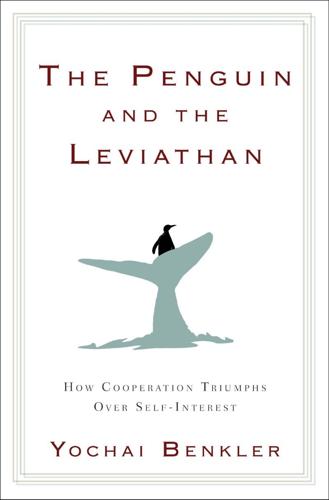
The Penguin and the Leviathan: How Cooperation Triumphs Over Self-Interest
by
Yochai Benkler
Published 8 Aug 2011
We See the World Through a Frame This brings us to the second strength of psychology: its attention to situational framing. Framing, quite simply, refers to our interpretation of a situation, relationship, context, or event. Anytime we make a decision to act, we have to first interpret the situation we’re in. Even economists have grudgingly admitted this; behavioral economics describes it as the framing effect. Amos Tversky and Daniel Kahneman, the fathers of behavioral economics, explain that people will make different decisions depending on how a situation is presented. For example, when making a bet, people will risk different amounts depending on whether the bet is described as risking a loss or aiming for a gain (behavioral economists have found that people display what is often called “loss aversion”: they will reject bets framed as potential losses, but accept that same bet when it is framed as potential gains).
…
For example, when making a bet, people will risk different amounts depending on whether the bet is described as risking a loss or aiming for a gain (behavioral economists have found that people display what is often called “loss aversion”: they will reject bets framed as potential losses, but accept that same bet when it is framed as potential gains). Countless experiments have demonstrated equally powerful framing effects in a wide range of contexts. While “framing” is popularly known today through these kinds of “irrationalities,” the situation and its impact on what we want and what we can or should do is a long-standing component of social psychology. Sociologist Erving Goffman termed it frame analysis. It is relatively easy to see the effects situational framing can have on cooperation, even in very simple settings.

VoIP Telephony with Asterisk
by
Unknown
Published 8 Mar 2011
The line rate is 1.544 Mbps and supports a data paylo of 1.536 Mbp Signalling states are transported within a Superframe. This is required to support Switched voice or data service. Signals are sent with a"Robbed Bit" bit:8 of each channel's time slot is "robbed" to indicate a signaling state in the 6th and 12th frames. Effective throughput for the A signaling bit (Frame  6) is 666.66 BPS. Effective throughput for the B signaling bit (Frame 12) is the same (666.66 BPS). An Extended Superframe consists of twenty-four 193-bit frames. There are three types of framing bits; Frame Pattern Sync (FPS), Datalink (DL), and CyclicRedundancy Check (CRC) bits.
…
Of the 8 kbs framing bit bandwidth 4 kbs is allocated to the Datalink, 2 kbs is allocated to the CRC-6 characte and 2 kbs is used for synchronization purpose ESF (Extended Superframe Signaling) uses a "Robbed Bit" Each channel's timeslot is "robbed" to create a signaling in the 6th, 12th, 18th, and 24th frames. Effective throughput for the A signaling bit (Frame 6) is 333.33 BPS. Effective throughput for the B, C and D bits is the same (333.33 BPS) Using T Carrier Channels for Telephone Calls After your T1 provider drops the T1 into your premises, they may then hand you a CSU/DSU or a router. This router will have a T1 connection on the back.
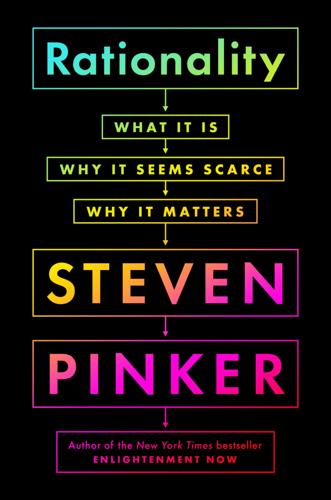
Rationality: What It Is, Why It Seems Scarce, Why It Matters
by
Steven Pinker
Published 14 Oct 2021
The psychologists Wändi Bruine de Bruin, Andrew Parker, and Baruch Fischhoff developed a measure of competence in reasoning and decision making (like Keith Stanovich’s Rationality Quotient) by collecting tests for some of the fallacies and biases discussed in the preceding chapters.6 These included overconfidence, sunk costs, inconsistencies in estimating risks, and framing effects (being affected by whether an outcome is described as a gain or a loss). Not surprisingly, people’s skill in avoiding fallacies was correlated with their intelligence, though only partly. It was also correlated with their decision-making style—the degree to which they said they approached problems reflectively and constructively rather than impulsively and fatalistically.
…
See active open-mindedness, lack of cluster illusion, 146–48 cognitive reflection, lack of, 8–10, 311 collider fallacy, 261, 262–63 confirmation bias, 13–14, 142–43, 216, 290, 342n26 conjunction fallacy (Linda problem), 26–29, 115, 116, 156 correlation implies causation, 245–47, 251–52, 312, 321, 323–24, 329–30 data snooping, 145–46, 160 denying the antecedent, 83, 294 dieter’s fallacy, 101 discounting the future too steeply, 320 dread risk, 122 exponential growth bias, 10–12, 320–21 expressive rationality, 297–98 false dichotomy, 100 forbidden base rates, 62, 163–66 framing effects, 117–18, 168–70, 178, 188–92, 192–96, 321, 323, 349–50n27 garden of forking paths, 145, 185, 348n60 genetic fallacy, 91, 92–93, 291 guilt by association, 91 heretical counterfactuals, 64–65 hot hand fallacy, 131 hot hand fallacy fallacy, 131–32 hyperbolic discounting.
…
See Bayesian reasoning evolution, 69, 173, 288, 308–9 excludability, 265 exclusive or (xor), 104–5, 133 expected utility Beccaria’s argument against cruel punishment and, 332–33 calculation of, 179–80 and certainty, 182–83, 188–90, 192 definition, 179 diminishing marginal utility and, 181–84, 181 emotions and, 179, 181–83, 190–92 Erasmus’s argument against war and, 331–32 intuitive calculation of, 180 lives and, 183–84 loss-aversion and, 192–94 maximization of, as rational choice, 174, 179 money and, 181–83 possibility, certainty and, 190–92, 195–96 risk-aversion and, 182–83, 192 as term, 179 See also rational choice exponential future discounting, 50–52, 53, 54 exponential growth bias, 10–12, 320–21 expressive rationality, 297–98 extraterrestrials, 286 Facebook, 127 fact-checking, 41, 300–301, 314, 316, 317–18 Fail Safe (film), 61 fairness, 164, 165, 217 fake news ease of spreading, 6 as entertainment, 306–7 fictionalized history as, 303 historical, 287–88 the irrationality crisis and, 284–85 openness to evidence vs., 311 religious miracles as, 287 rumor and, 308 false dichotomy, 100 family resemblance categories classical logic vs., 98–101, 346n28 definition, 99 informal fallacies arising from, 100–101 the representativeness heuristic and, 155 true/false values and, 100 See also deep learning famine, reduction of, 326 Farley, Tim, 321–23 Fauci, Anthony, 283–84 feminism, Enlightenment and, 336–37 finances, 237–38, 320–21 financial industry, 142–43, 165–66, 188, 327 Fischer, Bobby, 144 Fischhoff, Baruch, 323–24 Floyd, George, 123, 124–25 focal points, 124, 234–35 Forbes magazine, 313 forbidden base rates, 62, 163–66 forecasting accuracy of regression equations vs. human experts, 278–80 the conjunction rule and, 22–29 importance of, 22–23 superforecasters, 162–63 unpredictability of human behavior, 280–81 weather, 114, 127, 133, 220 Fore people, 153 formal fallacies affirming the consequent, 83, 85, 139 definition, 74, 83 denying the antecedent, 83, 294 detecting, 84 formal reconstruction exposes, 85–87 fortuitous randomization, 267 Foucault, Michel, 90 Fox News, 267–68 framing effects, 178, 188–96, 321, 323 Frank and Ernest (cartoon), 255 Franklin, Benjamin, 196 Freakonomics (Levitt and Dubner), 266 Frederick, Shane, 9–10, 50, 342nn17,19 freedom of speech, 41, 313–14 French Revolution, 337 frequency as factor in memory recall, 119 probability reframed as, 28–29, 117–18, 168–70, 349–50n27 frequentist interpretation of probability, 116, 117, 118, 128 Freud, Sigmund, 80, 90 full moon, and hospital ERs, 251–52 future, discounting of, 47–56, 320 See also goals—time-frame conflicts fuzzy categories.

Cogs and Monsters: What Economics Is, and What It Should Be
by
Diane Coyle
Published 11 Oct 2021
If there are non-rational ‘biases’ in human behaviour that we can incorporate as variations into our analysis, most economists cheerfully do so. By these I mean predictable ways in which people diverge from the broadly self-interested calculating logic based on all available information and fixed preferences, as assumed by conventional economic models. There is quite a long list of such biases, including framing effects (how choices are described), endowment effects (we value more what we already have), over-optimism compared to objective probabilities, and so on. Daniel Kahneman (2011) explains these as the result of the interplay between ‘fast’ and ‘slow’ thinking, which occur in different parts of the brain.
…
J., 122, 124 BBC Reith Lectures, 77–78 BBC Trust, 83 Becker, Gary, 2, 92, 119 behavioural economics: aggregation and, 3, 40, 42, 71–72, 100–102, 106, 113, 122–23, 141, 176–77, 201–2; beliefs of tomorrow and, 22; bias and, 109, 136; Coase on, 58; cognitive science and, 35–36, 48, 51, 91–92, 118–19, 186; competition and, 45–51 (see also competition); consumers and, 22, 59–60, 92, 109; context and, 88; failures and, 55; Goodhart’s Law and, 72, 103; happiness and, 70–71, 153; incentives and, 29, 33, 35, 55, 63–64, 80, 106, 110, 160, 200; interventions and, 48, 63, 104, 106, 160, 208, 211; markets as process and, 37–45; models and, 22, 35, 47, 63, 88, 92–93, 119, 136, 154; outsider context and, 88, 92–93, 100, 103–9; performativity and, 11, 23, 30, 211; progress and, 136–37, 145, 154, 157–60; psychology and, 38, 63, 70, 92, 94; public choice theory and, 64, 106, 119, 124; public services and, 33; rationality and, 22, 35, 46–47, 59, 109, 117–19; self-referential policy advice and, 63–64; separation protocol and, 119–20, 124; special interest groups and, 64–66; technocratic dilemma and, 67–79; twenty-first-century policy and, 186, 202, 207–8; Wu study and, 8 Bell, Daniel, 67 Bernanke, Ben, 17 Berners-Lee, Tim, 195 bias: academics and, 6; artificial intelligence (AI) and, 13, 161, 165, 187; behavioural, 109, 136; causality and, 13, 105; control groups and, 105; data, 13, 101, 105, 161, 187, 209; decision making and, 13, 109, 187, 209; framing effects and, 47; gender, 6, 8; institutional, 180; market, 180, 187, 209; non-rational, 47, 109; skill-biased technical change and, 132; special interest groups and, 64–66; survey, 101; twenty-first-century policy and, 187, 209 Biden, Joe, 205 Big Bang, 16 big data, 3, 13, 40, 51, 86, 100, 203, 209 biodiversity, 39, 63, 165 Black, Fisher, 23–25, 28 blackboard economies, 99 black box solutions, 161 BlackLivesMatter, 9, 214 black markets, 43 Black-Scholes-Merton model, 24–25 Blair, Tony, 208 Blake, William, 150 Blue Books, 150 BMW, 196 Booking, 173 Borges, J., 90 Boskin Commission, 146–47 Boston Dynamics, 137 Bowles, Sam, 85, 117, 119 Bretton Woods, 192 Brexit, 1, 37, 53, 56, 70, 110, 131, 155, 213 Brown, Dan, 108 Brynjolfsson, Eric, 176 bubbles, 20, 22, 29 Buchanan, James, 33 budget constraints, 177 Bundeskartellamt, 205 Bureau of Economic Policy Analysis, 66 business cycles, 71, 81, 102, 124 calculus, 16, 33, 90, 145 Calculus of Consent, The: Logical Foundations of Constitutional Democracy (Buchanan and Tullock), 33 Camus, Albert, 87, 108, 111 capitalism: criticism of, 19–20; free market and, 19, 41, 186; globalisation and, 110, 132, 139, 154, 164, 193–94, 196, 213; inequality from, 19; progress and, 143, 149; Schumpeter on, 143; twenty-first-century policy and, 186, 190, 195 Capital (Piketty), 131 carbon emissions, 38–40, 180, 187 Carlin, Wendy, 85 Cartlidge, John, 27 Case, Anne, 131 cash for clunkers, 55, 63 causality: bias and, 13, 105; correlation and, 94; deductive approach and, 103; economically establishing, 100; empirical work and, 2, 61, 94–96, 99; feedback and, 11, 94, 96; Leamer on, 102; methodological debate over, 2; models and, 2, 94–95, 102; moral issues and, 96; outsider context and, 94–96, 99–105; progress and, 137; public responsibilities and, 61, 74; randomised control trials (RCTs) and, 93–95, 105, 109–10; reflexivity and, 11, 81; societal statistics and, 61; statistics and, 61, 95, 99, 102; two-way, 94, 96 central banks: independence of, 16; progress and, 149; public responsibilities and, 16, 32, 62, 64, 66–67, 76, 81 central planning: artificial intelligence (AI) and, 184, 186–87; competition and, 38, 41, 124, 182; failure of communist, 40, 182–88, 190; socialist calculation debate and, 182–88, 190, 209 Central Planning Bureau, 66 Chetty, Raj, 86 Chicago School, 24–25, 73, 75, 190, 193–94 Chile, 184 China, 173, 195, 206 Citadel, 27 City of London, 16, 19 climate change, 85, 148, 154 Close the Door campaign, 155–56 cloud computing, 150, 170–72, 184, 197 Coase, Ronald, 57–58, 62, 98–99 codes of conduct, 9, 206 cognitive science, 35–36, 48, 51, 91–92, 118–19, 186 Colander, David, 100 Cold War, 190 Coming of Post-Industrial Society, The (Bell), 67 common sense, 78, 127 communication, 53, 127, 168; bandwidth and, 171; compression and, 171; cost of, 196; 4G platforms and, 195; instant messaging, 171; latency and, 171; price of, 150, 171, 177; servers and, 25–26, 141, 170; smartphones and, 46, 138–39, 164, 171, 173, 177, 195, 198; SMS, 171; social media and, 52, 73, 82, 140–41, 149, 157, 163, 173, 176–77, 195; telephony and, 4, 31, 46, 98, 123, 138–39, 144, 156, 164, 171, 173–74, 177, 184, 195, 198; 3G platforms, 60, 139, 173, 195; transmission speeds and, 171 comparative advantage, 78, 97 competition: behavioural fix and, 45–51; central planning and, 38, 41, 124, 182; Chinese, 173, 195, 206; creative destruction and, 41; digital economy and, 42, 85, 165, 181, 201–6; directory numbers and, 60; empirical work and, 181, 209; envelopment and, 203–4; incumbents and, 41–42; innovation and, 28, 41, 46, 68, 85, 209; monopolies and, 20, 42; network effects and, 202, 205; opportunity cost and, 56, 58, 80, 156; outsider context and, 98, 105; Pareto criterion and, 122–23, 126–27, 129; production and, 12, 41; profit and, 33, 41–42, 105, 204; progress and, 135, 158, 165; public responsibilities and, 28, 33, 38, 41–42, 45–48, 57–69, 74, 77, 79, 85; rationality and, 117; resource, 41, 45, 117, 123, 125; separation protocol and, 120, 123–25; socialist calculation debate and, 182–83; special interest groups and, 64–66; specific studies in, 12; spectrum auctions and, 60–61; SSNIP test and, 204; twenty-first-century policy and, 182, 201–9 Competition and Markets Authority (CMA), 205 computers: AI and, 116 (see also artificial intelligence [AI]); Black-Scholes-Merton model and, 24–25; changing technology and, 169; cloud computing and, 150, 170–72, 184, 197; data sets and, 2, 13, 51–52, 60, 101, 161, 177, 201, 209; David on, 169; declining price of, 170; empirical work and, 2, 17, 52; exchange locations and, 25; feedback and, 179; Millennium Bug and, 155; Moore’s Law and, 170, 184; power of, 2, 17, 40, 58, 170, 183–84, 188; progress and, 138, 144, 155; rationality and, 116–17; servers and, 25–26, 141, 170; software and, 25, 140, 155, 171, 177–78, 186, 197, 200–201, 203; Solow on, 169; speed and, 25, 184; statistics and, 17, 52, 58, 144, 169; supercomputers, 170; twenty-first-century policy and, 183–84, 186, 188, 214; ultra-high frequency trading (HFT) and, 25–27 conservatism, 30 Consumer Price Index (CPI), 146–47, 172 consumers: bad choices and, 3; behavioural economics and, 22, 59–60, 92, 109; conspicuous consumption and, 42; digital economy and, 42, 137, 172–76, 181, 198, 200–206, 213; empirical work and, 3, 181; income and, 93 (see also income); innovation and, 28, 102, 200; Keynes and, 22; online shopping and, 173, 198; outsider context and, 92, 96, 98, 100–102, 105, 108–9; progress and, 137, 141, 144, 146–47, 151; public responsibilities and, 22, 28, 42, 59–60, 65; rationality and, 116; technology and, 28, 102, 171–76, 181, 200, 213; time spent online, 176–78; twenty-first-century policy and, 184, 198–206; welfare and, 105, 206 Cook, Eli, 150 copyright, 140 CORE’s The Economy, 85–86, 212–13 cost-benefit analysis (CBA), 56–57, 58n12, 125–26, 207 cost of living, 143–47, 172 counterfactuals, 97–98, 158, 161, 198, 208 Covid19 pandemic: body politics and, 163; financial recovery from, 88, 114; GDP growth and, 88, 165; impact of, 3, 10–11, 14, 20, 38, 43, 45, 68, 75, 88, 110, 114, 132–33, 149, 153, 155, 163–66, 181, 194, 213–15; lockdowns and, 3, 43, 45, 88, 114, 163, 198; public opinion and, 165–66 “Creating Humble Economists” (Colander), 100 creative destruction, 41 curriculum issues, 2, 4–5, 83, 85, 88 Daily Telegraph, 159 Darwin, Charles, 48 data centres, 26 data sets, 2, 13, 51–52, 60, 101, 161, 177, 201, 209 David, Paul, 169 Deaths of Despair (Case and Deaton), 131 Deaton, Angus, 128–29, 131 debt, 76, 101, 153 decision making: artificial intelligence (AI) and, 116, 186–87; bias and, 13, 109, 187, 209; Green Book and, 56, 126; normative economics and, 110, 114, 120; opportunity cost and, 56; outsider context and, 93; production and, 12, 123, 140, 196; progress and, 160, 162; rationality and, 116 (see also rationality); rules of thumb and, 47–48, 90, 117, 212; self knowledge and, 81; separation protocol and, 120 DeepMind, 115–16 Deliveroo, 173 demand management, 31, 191–92 democracy, 33, 67, 69, 79, 193 deregulation, 16, 31, 60, 68, 71, 193–94 derivative markets, 16, 18, 23–25, 28 Desrosières, Alain, 146 Dickens, Charles, 150 digital economy: AI and, 115 (see also artificial intelligence (AI)); changing nature of, 168–81; cloud computing and, 150, 170–72, 184, 197; cogs and, 6, 129, 154, 165, 179; competition and, 42, 85, 165, 181, 201–6; consumers and, 42, 137, 172–76, 181, 198, 200–206, 213; difference of, 168–76; dominance of by giant companies, 133; envelopment and, 203–4; 4G platforms, 195; GAFAM and, 173; globalisation and, 110, 132, 139, 154, 164, 193–96, 213; GPTs and, 169; Great Financial Crisis (GFC) and, 113–14; growth and, 129, 132, 140, 143, 194, 202; implications of, 176–78, 211–14; individual and, 6, 13–14, 128–29, 141, 175, 179, 181, 201; innovation and, 169–70; market changes and, 173–76; measuring online value and, 176; monsters and, 6, 154; network effects and, 127, 141, 174, 177, 185, 199–202, 205, 209; new agenda for, 179–81; online shopping and, 173, 198; Phillips machine and, 135–37, 151, 192; populism and, 211; production and, 132, 140, 142, 176, 195–97, 202, 213; progress and, 14, 137–43, 150, 153–54, 164–67; Project CyberSyn and, 184; services and, 176; software and, 25, 140, 155, 171, 177–78, 186, 197, 200–201, 203; statistics and, 113, 150, 164, 170, 172, 212; superstar features and, 173–74; 3G platforms, 60, 139, 173, 195; twenty-first-century policy and, 13, 185–88, 194–210; wealth creation and, 132–33; welfare and, 128, 134, 143, 206, 208, 212 Director, Aaron, 190 directory numbers, 60 discount rates, 147–48 diversity, 6–9, 213–14 Dow Jones, 26 Duflo, Esther, 20–21, 52, 109, 137 eBay, 175 ECO, 11 Economics Job Market Rumors, 8 Economics Observatory (ECO), 214 economies of scale: changing technology and, 174; network effects and, 127, 174, 177, 185, 199–201, 209; progress and, 142 education: derivatives and, 16; growth and, 16–17, 132; interventions and, 12; online, 177; policy on, 60; provision of basic, 30; real-world context and, 88; skills and, 88, 128, 132, 169–70; spread of higher, 151, 153 Efficient Markets Hypothesis, 17, 29 Eichengreen, Barry, 16 electricity: changing economies and, 127, 169, 191–92; progress and, 139, 142, 156, 165, 169, 191–92; regulation and, 65; supply of, 32; twenty-first-century policy and, 191–92, 200–201; warranties on goods and, 105 empirical work: behavioural economics and, 117, 159; causality and, 2, 61, 94–96, 99; competition and, 181, 209; computers and, 2, 17, 52; consumers and, 3, 181; context and, 17, 35, 61, 78, 92; correlation and, 70, 94; counterfactuals and, 97–98, 158, 161, 198, 208; data sets and, 2, 13, 51–52, 60, 101, 161, 177, 201, 209; feedback and, 11, 94–95, 155, 179, 188–89, 203, 205; growth and, 17, 61, 78, 209; macroeconomics and, 74, 100; market structures and, 35; physics envy and, 50; politics and, 3, 76, 78–79, 124, 213; populism and, 77; public responsibilities and, 17, 35, 40, 52, 61, 70, 74–81, 90, 92, 94–102, 110–11; randomised control trials (RCTs) and, 93–95, 105, 109–10; rationality and, 17; separation protocol and, 119, 124, 128; social constructs and, 13; statistics and, 17, 52, 61, 90, 95, 99; taxes and, 3; theory and, 2, 17, 52, 74, 90, 96, 99, 124, 181 endogenous growth theory, 17, 202 Enlightenment, 20 envelopment, 203–4 environmentalists, 126 equilibrium, 31, 38–39, 90–91, 123, 182 ethics, 4, 34, 39, 100, 105, 115, 119–24 Ethics and Society group, 115 ethnicity, 6–7, 9 European Commission, 67, 130, 205 European Steel and Coal Community, 190 European Union (EU), 37, 67, 195, 204 Eurozone, 67, 74 exchange rates, 118, 192 Facebook, 133, 173, 204–5 facial recognition, 165 fairness, 43, 45–46, 166 fake items, 98 Fear Index, The (Harris), 27 feedback: causality and, 11, 94–96; changing technology and, 179; political economy and, 188–89; progress and, 155; twenty-first-century policy and, 203, 205 financial intermediation services indirectly measured (FISIM), 28 Financial Times, 68–69, 97–98 Fisher Ideal index, 144n3 fixed costs, 174, 177, 179, 185–86, 200 forecasting: agent-based modeling and, 102; conditional projections and, 76; financial crises and, 17, 30, 100–101, 112–13; growth and, 37, 61; inflation and, 36; macroeconomics and, 3, 12, 36–37, 76, 101–2, 112; models and, 17, 74, 101–2, 113; self-fulfilling prophecies and, 5, 22–23, 154–55, 157; twenty-first-century policy and, 205; weather, 76 Fourastié, J., 191 4G platforms, 195 framing, 47, 130, 208 Frankenfinance, 18, 21, 25, 51–52, 165 Freakonomics, 108 free market: Brexit and, 213; capitalism and, 19, 41, 186; criticism of, 19; globalisation and, 110, 132, 139, 154, 164, 193–94, 196, 213; politics and, 30, 36, 130, 206; public responsibilities and, 19, 30–32, 35–36, 45, 54; separation protocol and, 123–24; twenty-first-century policy and, 182, 186, 191, 193, 195, 207 frictions, 22, 113, 136, 154, 182 Friedman, Ben, 16 Friedman, Milton, 16, 31, 93, 104, 121, 190 Furman, Jason, 86 GAFAM, 173 GameStop, 27 game theory, 48, 90–91, 129, 159–60, 179–80 Gelman, Andrew, 108 gender, 6–9, 93 GenZ, 166 Giavazzi, Francesco, 68 Gigerenzer, Gerd, 48 Gilded Age, 133 Giudici, Claudio, 69 Glaeser, Ed, 92 globalisation, 110, 132, 139, 154, 164, 193–96, 213 Goldman Sachs, 19 Good Economics for Hard Times (Banerjee and Duflo), 109 Goodhart’s Law, 72, 103 Google, 133, 141, 173, 201, 204–5 Gordon, Robert, 142 Gould, Stephen Jay, 49–50 Gove, Michael, 110, 149 Government Economic Service (GES), 53, 83–85 GPT, 169 Great Depression, 3, 10, 17, 20, 74, 191, 213 Great Financial Crisis (GFC): behavioural economics and, 51; consequences of, 1, 3, 11, 213; digital economy and, 113–14; dynamic stochastic general equilibrium models and, 31; forecasting, 30, 101, 112–13; Greece and, 56–58, 67; Italy and, 56–58, 67–69; models and, 31, 101, 113; outsider context and, 87–88, 101, 110, 112–14; progress and, 149, 153, 159; public responsibilities and, 16–19, 21, 29–31, 37–38, 50–51, 56, 67–68, 73–74, 79, 84; technology and, 56, 181; twenty-first-century policy and, 194 Great Moderation, 17, 73 Greece, 56, 67–68 greed, 11, 16, 29, 164 Green, Duncan, 95–96 Green Book, 56, 126 Greenspan, Alan, 101 Griliches, Zvi, 198 Gross Domestic Product (GDP), 60; Covid19 pandemic and, 88, 165; Fisher Ideal index and, 144n3; FISIM and, 28; flatlining of, 142; free market and, 130; Gross Domestic Product (GDP) and, 172–73; Gross National Product (GNP) and, 151; growth and, 28, 46, 88, 97, 138, 143–44, 159, 165, 169, 171–72; inflation and, 13, 113, 148; internet and, 97; Laspeyres index and, 144n3; macroeconomics and, 13, 101, 113, 151; progress and, 138, 142–44, 148, 151, 158–59, 165, 172–73; real, 101, 142–44, 169, 173; Sen-Stiglitz-Fitoussi Commission on the Measurement of Economic Performance and, 151; social welfare and, 134; twenty-first-century policy and, 187; Winter of Discontent and, 158, 192 Gross National Product (GNP), 151 Grove, Andy, 41 growth: changing economies and, 171–72, 212; Covid19 pandemic and, 88, 165; derivatives market and, 16, 23, 28; digital technology and, 129, 132, 140, 143, 194–210; education and, 16–17, 132; empirical work and, 17, 61, 78, 209; endogenous growth theory and, 17, 202; faster, 66, 71, 144, 159; forecasting, 37, 61; Goodhart’s Law and, 72; Gross Domestic Product (GDP) and, 28, 46, 88, 97, 138, 143–44, 159, 165, 169, 171–72; income, 70, 131, 138, 143, 164–65, 194, 207; inflation and, 12, 66, 73, 178; innovation and, 37, 41, 46, 68, 71, 194, 209; internet and, 97; living standards and, 143–47, 172, 194; outsider context and, 12, 97, 101n1, 111; political economy and, 167, 181, 188–95; progress and, 138, 140, 143–45, 152, 159, 165; public responsibilities and, 16–17, 23, 28, 37, 41, 46, 61, 66, 68–73, 76, 78; recession and, 17, 51, 73, 111, 154, 158–59; slow, 11, 72; spillovers and, 129–30; sustainability and, 11, 20, 111, 148, 152, 166; technology and, 71, 132, 140, 202; twenty-first-century policy and, 187, 191–92, 194, 202, 207, 209; velocity of money and, 71 Guardian, 159 happiness, 70–71, 153 Harberger, A.
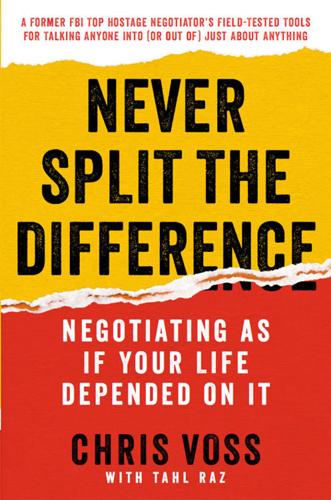
Never Split the Difference: Negotiating as if Your Life Depended on It
by
Chris Voss
and
Tahl Raz
Published 3 Oct 1989
This mentality baffled Kahneman, who from years in psychology knew that, in his words, “[I]t is self-evident that people are neither fully rational nor completely selfish, and that their tastes are anything but stable.” Through decades of research with Tversky, Kahneman proved that humans all suffer from Cognitive Bias, that is, unconscious—and irrational—brain processes that literally distort the way we see the world. Kahneman and Tversky discovered more than 150 of them. There’s the Framing Effect, which demonstrates that people respond differently to the same choice depending on how it is framed (people place greater value on moving from 90 percent to 100 percent—high probability to certainty—than from 45 percent to 55 percent, even though they’re both ten percentage points). Prospect Theory explains why we take unwarranted risks in the face of uncertain losses.
…
C., 178 financial negotiations. See also bargaining car-buying, 119, 188–90, 243 Chris discount, 180 getting a rent cut, 208–11 getting your counterparts to bid against themselves and, 181–85 MBA student and soliciting funds, 200–201 Fisher, Roger, 10–11, 252 Fooled by Randomness (Taleb), 215 framing effect, 12, 20 Freeh, Louis, 14 fundraising, 89–91 Gaddafi, Muammar, 99–100 Getting to Yes (Fisher and Ury), 11, 13, 14, 16, 20, 80, 98, 252 Giffe, George, Jr., 9–10 goals/outcome goals, 12, 52, 81, 95, 112, 160, 170, 174, 201, 211, 240, 242, 243 Ackerman model and, 206, 208 agreement or “yes” as, 94 ascertaining counterpart’s, 28, 231 bargaining styles and, 193, 195, 196 BATNA and, 252 best/worst range, 69, 253 extracting information as, 25, 47, 110, 147 four steps for setting, 253–54 human connection as, 72 Negotiation One Sheet, 252–54 win-win or compromise, 115, 116, 253 Griffin, William, 213–14, 216–17, 235, 244 Haiti as kidnap capital, 113–14 kidnapping case, 113–15, 133–35, 207–8 Harvard Negotiation Research Project, 2, 10–11 Harvard University, 4 executive negotiating course, 1, 5–8 Heen, Sheila, 5–6, 7 HelpLine, 81 “CareFronting,” 82, 84 Voss answering phones for, 81–84, 85 Heymann, Philip B., 14 hostage mentality, 159 hostage negotiation.
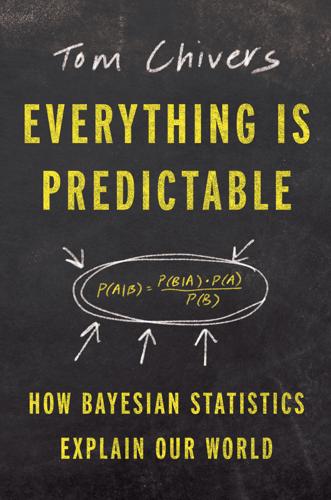
Everything Is Predictable: How Bayesian Statistics Explain Our World
by
Tom Chivers
Published 6 May 2024
(These examples are taken from a 1981 study by Kahneman and Tversky.)2 That’s because, in decision theory, the stuff we were talking about in the last chapter, the probability of both A and B happening must by logical necessity be smaller than, or at most equal to, the probability of either A or B happening on its own—in notation, (P(A,B) ≤ P (A). The number of universes in which Björn Borg loses the first set cannot be smaller than the number of universes in which Björn Borg loses the first set but goes on to win the match. Misunderstanding that is called the conjunction fallacy. People also get confused by framing effects, Tversky and Kahneman found in another 1981 paper.3 Say you tell people that there has been an outbreak of a novel disease that is expected to kill six hundred people and that there are two possible approaches to combating the disease, one reliable but partial, the other a long shot but potentially perfect.
…
Bayesianism, 173 selecting frameworks for, 168 in selection of hypotheses, 136 in uncertainty, 241 decision theory, 106–107, 228–229 see also Bayesian decision theory Deen, Andrew, 18–19 DeepMind, 221 de Finetti, Bruno, 106, 110, 197 Defoe, Daniel, 23 degree of certainty, 49–52 DeGroot, Morris, 110 de Méré, Chevalier (Antoine Gombaud), 37–38 Democritus, 271 de Moivre, Abraham, 27, 53–61, 73, 77 depression, 308–313 derivatives, 34–35 dice gambling, 35–38 Diogenes, 266 Dissenters, 25 see also Nonconformists Divine Benevolence (Bayes), 30–31 Divinity Hall, 28 divorce, rates of, 256–258 DNA evidence, 10, 18–19 doctrine of chance, 46 Doctrine of Chances, A (de Moivre), 61 domestic abuse, 19–20 dopamine, 288–294 Down’s syndrome, 16–17 Dress, The, 276–277, 282–283 Drummond, Colin, 28 Duke University, 168 Dutch book, 197, 200 E Eames, John, 33 economics, 198–200 Edinburgh, 28 Edwards, Ward, 147 Edwards syndrome, 17 effect size, 149* Efron, Bradley, 90 Eindhoven University of Technology, 130–131 Einstein, Albert, 143–144 Elizabeth I, Queen, 24 Elson, Malte, 124 email, 321–322 Enigma machine, 108 Enquiry Concerning Human Understanding (Hume), 138 entropy, 315 Epicurus, 30 epistemic uncertainty, 160–162 epistemology, 264–268, 330 equivalence testing, 149* Erdös, Paul, 244 escitalopram, 309 Essay on Fundamentals in Religion, A (Foster), 31 “Essay towards Solving a Problem in the Doctrine of Chances, An” (Bayes), 24, 65, 70, 72 Euclid, 271 eugenics, 88–94 Eugenics Review, 92 European Council for Nuclear Research (CERN), 133–134 evidence belief in, 6–7 and prior beliefs, 21–22 evolution, 322–323 expectations, 192 expected evidence, 192 expected value, 196–197 experts, testing judgment of, 251–256 F factorials, 56 “False Positive Psychology” (Simmons, Nelson, and Simonsohn), 121, 123 family resemblances, 265–266 Fault Tolerant Tennis, 301 “Feeling the Future” (Bem), 118 Fermat, Pierre de, 38–46, 54 Fermi, Enrico, 259–261 Fermi estimate, 259 Feyerabend, Paul, 139, 268, 330 Fight Club, 119 firing solutions, 109 Fisher, Ronald, 89–94, 96–98, 100, 105–106, 113, 142, 289 Fitzhugh, Richard, 283 five-sigma threshold, 137 flow state, 328 Fluxions, see Introduction to the Doctrine of Fluxions, An (Bayes) Food and Drug Administration, 137 forward model, 296–297 Foster, James, 31 framing effects, 229–230 Frankenstein (Shelley), 71 Franklin, Benjamin, 71 fraud, in science, 117–118 free energy, 314–318 Freeman, Alexandra, 170–171 Freeman, P. R., 111 free will, 80 frequency bias, 240 frequentism, 81–94, 108–109, 114–116, 149* Friston, Karl, 295, 296, 300, 313–314, 316–320, 329 Frith, Chris, 284, 287, 288, 290, 303–308 Frith, Uta, 303* “Fully Monty Carlo, The,” 112 G Galton, Francis, 81, 85–94, 217 games, definition of, 264–266 games of chance, 35–46 game theory, 201–203 Gardner, Martin, 247 “Gaudeamus Igitur,” 112 gaze heuristic, 238–239 genomes, 323–324 Gigerenzer, Gerd, 19, 238 glasnost, 251 Goldacre, Ben, 11 Gombaud, Antoine (Chevalier de Méré), 37–38 Good, I.

Adaptive Markets: Financial Evolution at the Speed of Thought
by
Andrew W. Lo
Published 3 Apr 2017
If so, please get in touch with my publisher immediately so we can help you out with your investment needs. Clearly the rational choice is Bravo-Charlie. When the decision is put into these stark terms, everyone will choose Bravo-Charlie over Alfa-Delta, but only when the decision is framed in this particular way. For his work in documenting these framing effects, and many other departures from rationality, Kahneman was awarded the Nobel Prize in Economics in 2002, Tversky having died in 1996 (the Nobel Prize isn’t awarded posthumously). This represented excellent work for two noneconomists. Now I should tell you that my MBA students hate this example.
…
Adaptive markets offer a practical framework in which we can think systematically about taking on this challenge. The first step requires a subtle but important shift in our language. Instead of seeking to “change culture,” which seems naïve and hopelessly ambitious, suppose our objective is to engage in “behavioral risk management” instead.21 As we saw Tversky and Kahneman demonstrate in chapter 2, framing effects are important.22 Despite the fact that we’re referring to essentially the same goal, the latter phrase is more concrete, feasible, and—this is important—unassailable from a corporate board’s perspective. Using the framework of behavioral risk management, we see that human behavior is a factor in every type of corporate malfeasance.
…
See also “Quant Meltdown” (August 2007) financial engineering, 212, 415 financial sector, 330–332 finches, 226–227, 240, 244 FINRA (Financial Industry Regulatory Authority), 360 financial technology, 248, 361, 399, 405 first-order false belief, 111 Fisher, Larry, 23 Fisher, Ronald Aylmer, 216–217 fixed-income arbitrage, 243, 293 fixed-rate commissions, 281 flash crashes, 358–359, 360 Food and Drug Administration (FDA), 404 food production, 8–9 footbridge dilemma, 339 foreign exchange, 12–16, 24, 38 Foundations of Economic Analysis (Samuelson), 177, 210, 212–213 Fouse, William L., 263 FOXP2 gene, 173–174 fractional reserve banking, 344 framing effects, 58–59, 388 France, 242 fraternal twins, 159, 161 Freddie Mac, 298, 379 Friedman, Milton, 25, 34 Fuld, Dick, 318 functional magnetic resonance imaging, (fMRI), 77–78, 86, 88–89, 90, 101, 102, 186, 337, 338 funds of hedge funds, 293 futures contracts, 20, 34, 243, 268, 273, 276, 356 future value, 98 Galapagos Islands, 225–227 gambling, 17, 59–60, 67, 88–89, 91–92, 186 game theory, 170, 179, 212, 217, 336 Gaucher disease, 418, 419 Gaussian distribution (bell curve), 22, 273 Gazzaniga, Michael, 113, 115–117, 123, 313 Gekko effect, 348, 391 Gekko, Gordon (fictional character), 345, 346, 349, 387, 417 GenBank, 402–403 general equilibrium theory, 212, 213 genome sequencing, 401, 402 Genzyme, 419 geo-engineering, 416 Germany, 242 Gerrold, David, 190 Getmansky, Mila, 317, 376 Gibbs, Josiah Willard, 20, 210 Gibson, Rajna, 353 Gift of Fear, The (de Becker), 1 Gigerenzer, Gerd, 216 Gilovitch, Thomas, 68–69 Gimein, Mark, 317 Glimcher, Paul, 99 glucocerebrosidase, 419 Goldman Sachs, 242, 287, 295, 307, 308, 324 Goldfield, Jacob, 311 Good Night, Gorilla (Rathmann), 135 Google, 405 gorilla, 150 Gould, Stephen Jay, 171, 172 Government Accountability Office (GAO), 308, 311, 351–352 government bonds, 249, 292; U.S.
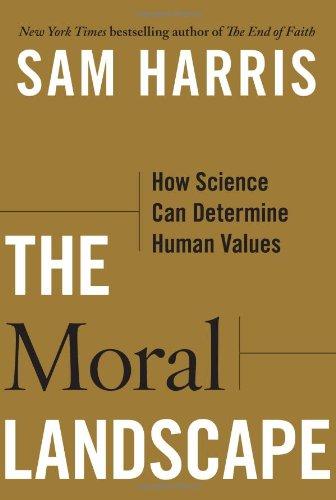
The Moral Landscape: How Science Can Determine Human Values
by
Sam Harris
Published 5 Oct 2010
We can, in other words, use reason to understand, quantify, and predict our violations of its norms. This has moral implications. We know, for instance, that the choice to undergo a risky medical procedure will be heavily influenced by whether its possible outcomes are framed in terms of survival rates or mortality rates. We know, in fact, that this framing effect is no less pronounced among doctors than among patients.74 Given this knowledge, physicians have a moral obligation to handle medical statistics in ways that minimize unconscious bias. Otherwise, they cannot help but inadvertently manipulate both their patients and one another, guaranteeing that some of the most important decisions in life will be unprincipled.75 Admittedly, it is difficult to know how we should treat all of the variables that influence our judgment about ethical norms.
…
We could ask subjects whether they would impose a 50 percent chance of death upon two innocent people, a 10 percent chance on ten innocent people, etc. How we should view the role that probability plays in our moral judgments is not clear, however. It seems difficult to imagine ever fully escaping such framing effects. Science has long been in the values business. Despite a widespread belief to the contrary, scientific validity is not the result of scientists abstaining from making value judgments; rather, scientific validity is the result of scientists making their best effort to value principles of reasoning that link their beliefs to reality, through reliable chains of evidence and argument.

Super Thinking: The Big Book of Mental Models
by
Gabriel Weinberg
and
Lauren McCann
Published 17 Jun 2019
For example, headlines have a framing effect, affecting the meaning people take away from stories. On August 31, 2015, three police officers responded to a 911 call about a burglary in progress. Unfortunately, the call did not specify an exact address, and the officers responded to the wrong house. Upon finding the back door unlocked, they entered, and encountered a dog. Gunfire ensued, and the dog, homeowner, and one of the officers were shot, all by officer gunfire. The homeowner and officer survived. Two headlines framed the incident in dramatically different ways. Framing Effect In a study by Ullrich Ecker and others, “The Effects of Subtle Misinformation in News Headlines,” presented in the December 2014 issue of the Journal of Experimental Psychology: Applied, students read an article about a small increase in burglary rates over the last year (0.2 percent) that was anomalous in a much larger decline over the past decade (10 percent).

Tyler Cowen - Stubborn Attachments A Vision for a Society of Free, Prosperous, and Responsible Individuals
by
Meg Patrick
In some cases (e.g., the United States 1946-91) greater wealth is correlated with lower levels of self-reported happiness; see Dieter (1984), Blanchflower and Oswald (2000), Diener and Oishi (2000), Myers (2000), Kenny (1999), Lane (1998), Frey and Stutzer (2000), and Easterlin (1995). On the United States, see (Frey and Stutzer 2002a, pp.76-7). For a criticism of the income-happiness from a time use perspective, see Kahneman et.al. (2006). 19 See Deaton (2007). 28 effects, surely talk about happiness is subject to framing effects as well (if anything it could be easier to recalibrate your language than to recalibrate your happiness expectations). The wealthy develop higher standards for reporting when they are “happy” or “very happy.” If you are a millionaire living next door to a billionaire, you might be less likely to report that you are ecstatically well-off even though your day to day existence is pretty sweet.
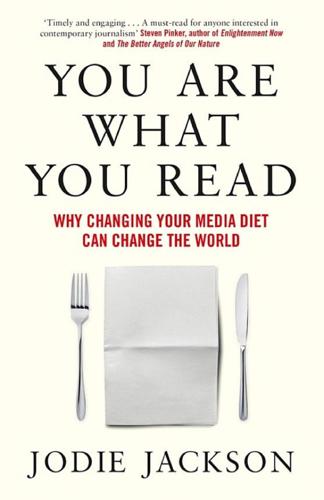
You Are What You Read
by
Jodie Jackson
Published 3 Apr 2019
, Nelson-Hall, Chicago, IL, 2001. 5 McCombs, M., Setting the Agenda, Polity, Cambridge, UK, 2004. 6 Ibid. 7 Patterson, T., The Vanishing Voter, Vintage, New York, 2003, p. 89. 8 Ibid. 9 Bureau of Justice Statistics: National Crime Victimization Survey, available at: https://pdfs.semanticscholar.org/77bd/0d613de2b1d38681466128d5b1ee1280c423.pdf 10 The Sentencing Project, available at: https://static.prisonpolicy.org/scans/sp/usno1.pdf 11 Ibid. 12 Gross, K., ‘Framing Persuasive Appeals: Episodic and Thematic Framing, Emotional Response, and Policy Opinion’, Political Psychology, 29(2), 2008, pp. 169–92. 13 Goffman, E., Frame Analysis: An Essay on the Organization of Experience, Harper & Row, New York, 1974, p. 21. 14 Druckman, J., ‘The Implications of Framing Effects for Citizen Competence’, Political Behavior, 23(3), 2001, p. 227. 15 Reuters News Report: Digital News report 2017, available at: https://reutersinstitute.politics.ox.ac.uk/sites/default/files/Digital%20News%20Report%202017%20web_0.pdf MISREAD OR MISLED If you don’t read the newspaper, you’re uninformed.
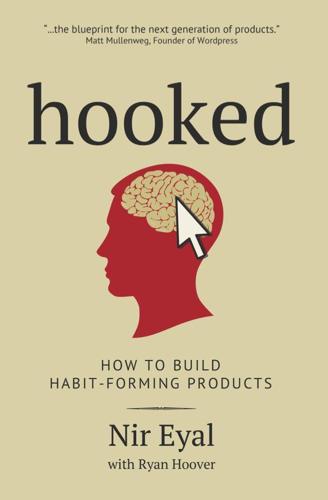
Hooked: How to Build Habit-Forming Products
by
Nir Eyal
Published 26 Dec 2013
My recent search for a DVD revealed there were “only 14 left in stock” (figure 18), while a search for a book I’ve had my eye on says only three copies remain. Is the world’s largest online retailer almost sold out of nearly everything I want to buy or are they using the scarcity heuristic to influence my buying behavior? FIGURE 18—“ONLY FOURTEEN LEFT IN STOCK”? The Framing Effect Context also shapes perception. In a social experiment, world-class violinist Joshua Bell decided to play a free impromptu concert in a Washington, D.C., subway station.9 Bell regularly sells out venues such as the Kennedy Center and Carnegie Hall for hundreds of dollars per ticket, but when placed in the context of the D.C. subway, his music fell upon deaf ears.
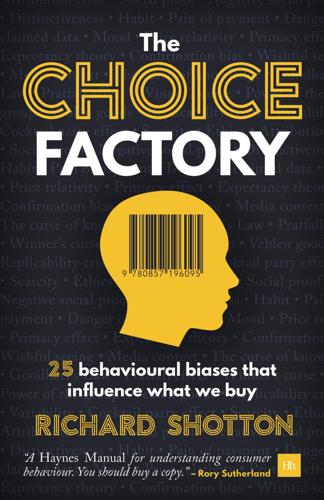
The Choice Factory: 25 Behavioural Biases That Influence What We Buy
by
Richard Shotton
Published 12 Feb 2018
, by Ola Svenson [Acta Psychologica, Vol. 47, pp. 143–148, 1981] The Wiki Man by Rory Sutherland [2011] Psychology of Intelligence Analysis by Richards Heuer [1999] Bias 14: Wishful seeing ‘Value and Need as Organizing Factors in Perception’, by Jerome Bruner and Cecile Goodman [Journal of Abnormal and Social Psychology, Vol. 42, pp. 33–44, 1947] Grow: How Ideals Power Growth and Profit at the World’s Greatest Companies by Jim Stengel and Marc Cashman [2011] The Halo Effect by Phil Rosenzweig [2007] Bias 15: Media context weirderthanyouthink.wordpress.com/tag/daniel-dennett ‘Evidence for a neural correlate of a framing effect: bias-specific activity in the ventromedial prefrontal cortex during credibility judgments’, by M. Deppe, W. Schwindt, J. Krämer, H. Kugel, H. Plassmann, P. Kenning, E. Ringelstein, [Brain Research Bulletin, Vol. 67, No. 5, pp. 413–421, 2005] Behind the Scenes in Advertising: More Bull More (Mark III) [2003] ‘Is advertising rational?’
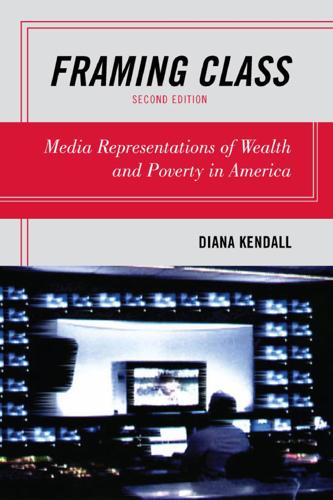
Framing Class: Media Representations of Wealth and Poverty in America
by
Diana Elizabeth Kendall
Published 27 Jul 2005
VH1’s The Fabulous Life is an excellent example; in it the prices of a celebrity’s lavish possessions pop up on the TV screen as the story of the well-known individual’s life unfolds. Viewers get the “inside scoop” on the cost of birthday celebrations, clothes, residences, and private jet travel. The price of each item is carefully put into perspective for middle- and lower-class viewers. THE TWENTY-FOUR-KARAT GOLD FRAME: EFFECTS OF FRAMING THE WEALTHY The media’s framing of stories about the wealthy influences the opinions of people in other classes. Lacking personal encounters with extremely wealthy individuals, people in the middle, working, and poor classes look to the media for an insider’s view of how the “other half” lives.
…
If, however, the media present these middle-class problems as a form of victimization, the blame shifts to corporations and government officials. Even the poor and homeless may be portrayed as infringing on the rights and property of the middle class. As political scientist Shanto Iyengar states with regard to the media framing of poverty, “While there is as yet no well-developed theory of framing effects, it seems quite likely that these effects occur because the terms or ‘frames’ embodied by a stimulus subtly direct attention to particular reference points or considerations.”144 Similarly, 9781442202238.print.indb 206 2/10/11 10:47 AM Splintered Wooden Frames 207 media framing of stories about the middle class also directs audiences’ attention to particular reference points and considerations.
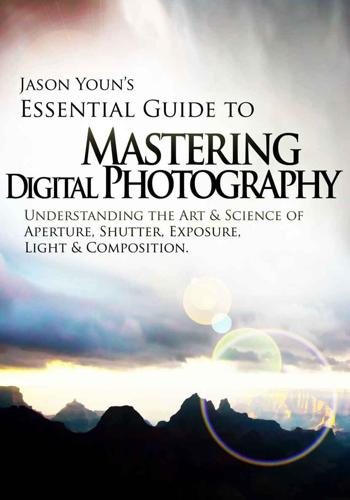
Mastering Digital Photography: Jason Youn's Essential Guide to Understanding the Art & Science of Aperture, Shutter, Exposure, Light, & Composition
by
Jason Youn
Published 12 Jul 2013
Pay attention for it when you watch a movie; guaranteed, you will see it being used. It could be the edges of a cockpit, or the frame of a doorway, or or trees in a forest. Below, Bob has come back to show us a common example of a frame within a frame. Here Bob is standing in a field waving. In the left picture he is alone; in the right, a tree creates a frame within a frame effect. The tree not only provides balance to Bob, but it also constricts the framing of the image to left and middle portions of the frame. Which do you think has a stronger composition? Bob was also kind enough to pose for a very cliche frame within a frame image. Again in the first image Bob is just in a field, in the next he is in the window of a house.
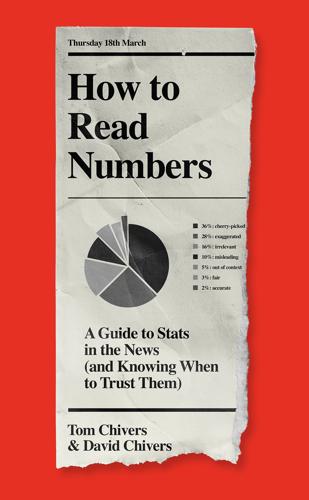
How to Read Numbers: A Guide to Statistics in the News (And Knowing When to Trust Them)
by
Tom Chivers
and
David Chivers
Published 18 Mar 2021
There are other ways in which samples can be biased; the most obvious is leading questions. For instance, if you ask people whether we should give medicine to 600 people, their answers will depend on whether you say ‘200 people will be saved’ or ‘400 people will die’, even though those statements are logically identical.7 This ‘framing effect’ is visible in polling: for instance, there is a tendency to say ‘yes’ to yes-no questions (e.g. ‘Should the government pay for the treatment?’). So, is cheese on toast Britain’s favourite snack? Well, perhaps Raisin.co.uk did take great pains to do a representative sample, and perhaps they did reweight their results according to age, sex and voting intention: we don’t know.
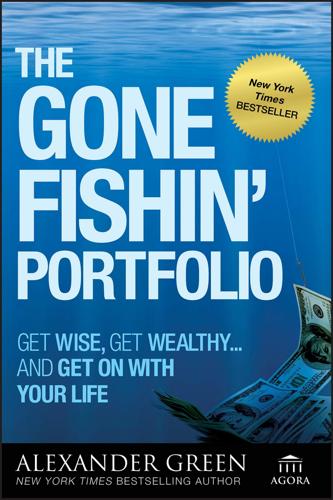
The Gone Fishin' Portfolio: Get Wise, Get Wealthy...and Get on With Your Life
by
Alexander Green
Published 15 Sep 2008
Shermer shows that consumers and investors also fall prey to cognitive dissonance, hindsight bias, self-justification, inattentional blindness, confirmation bias, the introspection illusion, the availability fallacy, self-serving bias, the representative fallacy, the law of small numbers, attribution bias, the low aversion effect, framing effects, the anchoring fallacy, the endowment effect, and blind spot bias. (And you thought most of us only had a couple small glitches upstairs.) By the time Shermer is done exposing all the flaws in our mental machinery, you feel inclined to put the efficient market hypothesis right up there with the “stork theory” in sex education.
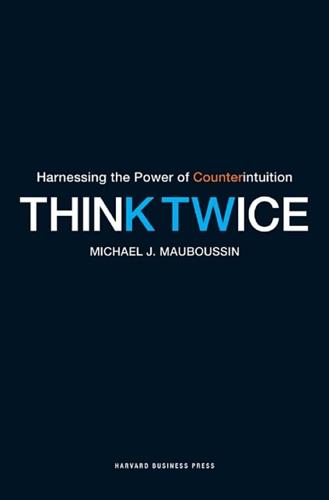
Think Twice: Harnessing the Power of Counterintuition
by
Michael J. Mauboussin
Published 6 Nov 2012
Likewise, skillful people who have suffered a period of poor outcomes are often a good bet, since luck evens out over time.11 Picking the Main Mistakes We Professionals Make The primary audience for this book is investors and businesspeople, although the concepts are relevant for other professionals as well. This book is neither a survey of common mistakes nor an exposition of one big theme. For instance, most books focus either on the components of prospect theory (loss aversion, overconfidence, framing effects, anchoring, and the confirmation bias) or they dwell on one important idea.12 Rather, I have tried to select the concepts that I have found most useful, based on my experience in the investment industry and through my study of psychology and science. Each of the following chapters discusses a common decision mistake, illustrates why that mistake is consequential, and offers some thoughts on how to manage the problem.
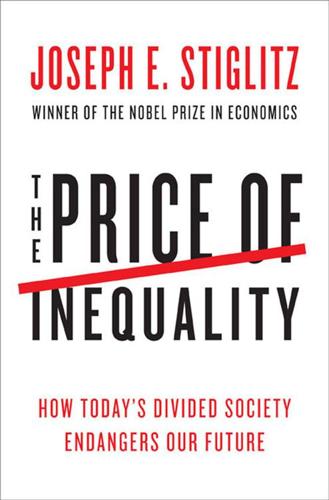
The Price of Inequality: How Today's Divided Society Endangers Our Future
by
Joseph E. Stiglitz
Published 10 Jun 2012
The alternative perspective of behavioral economics is expressed in the title of the popular book by Dan Ariely, Predictably Irrational: The Hidden Forces That Shape Our Decisions (New York: HarperCollins, 2008). 10. These ideas have begun to be used in the context of politics. See George Lakoff, Don’t Think of an Elephant! Know Your Values and Frame the Debate (White River Junction, VT: Chelsea Green, 2004). 11. This is called the anchoring effect. See discussions of anchoring and framing effects on judgments and preferences in Daniel Kahneman, Paul Slovic, and Amos Tversky, eds., Judgment under Uncertainty: Heuristics and Biases (Cambridge: Cambridge University Press, 1982); and Daniel Kahneman and Amos Tversky, eds., Choices, Values and Frames (New York: Cambridge University Press, 2000).
…
For a popular and recent discussion, see Daniel Kahneman, Thinking, Fast and Slow (New York: Farrar, Straus and Giroux, 2011); and Richard Thaler and Cass Sunstein, Nudge: Improving Decisions about Health, Wealth, and Happiness (New Haven and London: Yale University Press, 2008). 12. See the discussion of framing effects in the case of the introduction of lifecycle funds in U.S. 401(k) plans in Ning Tang, Olivia S. Mitchell, Gary R. Mottola, and Stephen P. Utkus, “The Efficiency of Sponsor and Participant Portfolio Choices in 401(k) Plans,” Journal of Public Economics 84, nos. 11–12 (2010): 1073–85; and Olivia S.
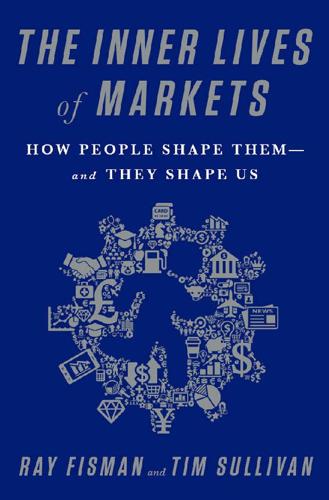
The Inner Lives of Markets: How People Shape Them—And They Shape Us
by
Tim Sullivan
Published 6 Jun 2016
The payoffs—and so the incentives to defect or cooperate—were identical. All that differed was that subjects were cued to think they were either Wall Street traders or community builders. Outside observers of the experiment predicted that the defection rates would be virtually identical for both versions of the game.6 But the framing effect was shockingly large. Those randomly assigned to play the Wall Street game defected nearly 70 percent of the time, more than twice as often as those in the community game. Ross and his colleagues also recorded what participants expected their partners would do, and in the Wall Street game, subjects defected in large part because they expected their partners were about to do the same.
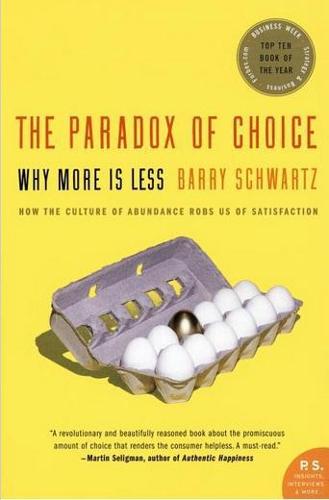
The Paradox of Choice: Why More Is Less
by
Barry Schwartz
Published 1 Jan 2004
Tversky, “Choices, Values, and Frames,” American Psychologist, 1984, 39, 341–350. Many other examples are collected in D. Kahneman and A. Tversky (eds.), Choices, Values, and Frames (New York: Cambridge University Press, 2000). In sum, just how well The relation between framing and subjective experience is well discussed by D. Frisch, “Reasons for Framing Effects,” Organizational Behavior and Human Decision Processes, 1993, 54, 399–429. we give disproportionate weight A.J. Sanford, N. Fay, A. Stewart, and L. Moxey, “Perspective in Statements of Quantity, with Implications for Consumer Psychology,” Psychological Science, 2002, 13, 130–134. Or suppose you are Many examples of phenomena discussed in this section can be found in articles collected in D.
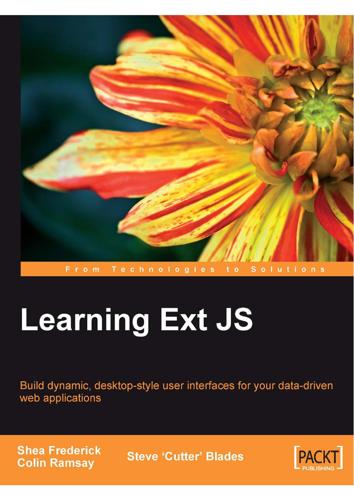
Learning Ext Js
by
Shea Frederick
Published 19 Dec 2008
The simplest way of using it is without arguments: Ext.get('target').frame(); This causes the target element to radiate a single light blue ping to draw attention to the element, which may be useful in some scenarios. However, to make sure that the user knows about a more important event, we could use something like this: Ext.get('target').frame('ff0000', 3); The first argument is the hexadecimal color of the framing effect, in this case, an angry red. The second argument specifies the number of times the ping is to be repeated. So here, we're using three red pulses to indicate that something pretty bad is about to happen. These are the real strengths of the frame method: repetition, and the ability to use different colors to represent different situations and priorities.
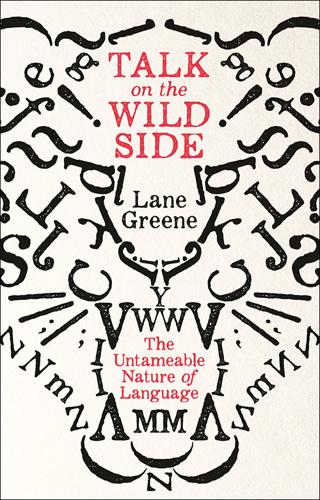
Talk on the Wild Side
by
Lane Greene
Published 15 Dec 2018
Republicans portray taxes as an affliction, and so promise “tax relief”. Democrats are too quick to follow, promising their own version of the same. So he thinks they should reframe taxes, emphasising the good things they pay for, calling them not a burden, but “membership fees”. There is some good evidence for the power of framing effects in politics – and not only from the polls of Frank Luntz. Lera Boroditsky, a psychologist who specialises in language and thought at the University of California San Diego, has researched how simple differences in metaphor make a big difference in the kind of policy solutions people support. For example, she and Paul Thibodeau gave one group of experimental subjects a news paragraph about a fictional town, Addison, beginning “Crime is a beast ravaging the city of Addison” (emphasis mine), and went on to describe the crime problem in detailed statistics.
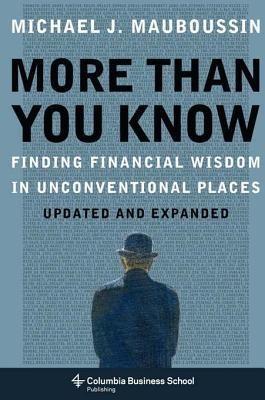
More Than You Know: Finding Financial Wisdom in Unconventional Places (Updated and Expanded)
by
Michael J. Mauboussin
Published 1 Jan 2006
We can express the essence of the poor-thinking problem with the following syllogism:Humans are irrational Markets are made up of humans Markets are irrational This logic stream appears to generate one of behavioral finance’s main conclusions. Hersh Shefrin, a leading behavioral-finance researcher, writes: “Behavioral finance assumes that heuristic-driven bias and framing effects cause market prices to deviate from fundamental values.”3 The simple (and somewhat intuitive) message is that the aggregation of irrational individuals must lead to an irrational market. To see the weakness in this case, we have to consider investor behavior on two levels: collective and individual.
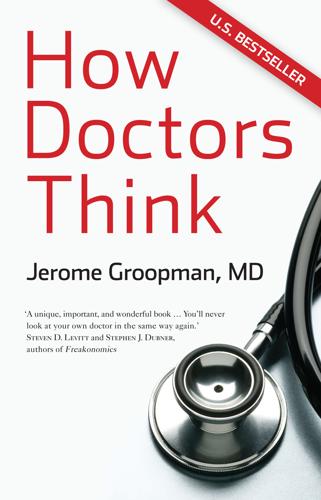
How Doctors Think
by
Jerome Groopman
Published 15 Jan 2007
The cognitive mistakes that account for most misdiagnoses are not recognized by physicians; they largely reside below the level of conscious thinking. When you or your loved one asks simply, "What else could it be?" you help bring closer to the surface the reality of uncertainty in medicine. "What else could it be?" is a key safeguard against these errors in thinking: premature closure, framing effect, availability from recent experience, the bias that the hoofbeats are horses and not zebras. Each cognitive error constrains the pursuit of answers, and correcting the error helps the doctor think of a test or procedure that he didn't previously consider and can make the diagnosis. "Is there anything that doesn't fit?"
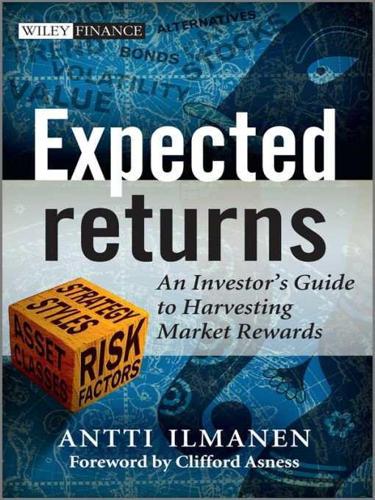
Expected Returns: An Investor's Guide to Harvesting Market Rewards
by
Antti Ilmanen
Published 4 Apr 2011
The authors stress that investors only overweight salient low-probability events—a point that may resolve the tension between PT and the idea that blackswan-type low-probability events, events that investors think are nigh impossible or do not think about at all, are underweighted. PT itself does not generate many testable predictions. It needs to be combined with other assumptions, such as narrow framing or the house money effect (as discussed below). Figure 6.1. Prospect theory’s value function and probability-weighting function (stylized forms). Framing effects One feature of PT preferences is that people derive decision utility from the gains and losses of a single trade. Ignoring the rest of wealth implies narrow framing. Narrow framing involves analyzing problems in too isolated a fashion. It can be caused by the fact that our cognitive resources are limited.
…
forward premium puzzle forward rate bias forward rate curve (C-P BRP) forward-looking asset return measures building block approaches carry strategies value strategies forward-looking indicators asset class real yields carry strategies contrarian approach historical records market mispricing shortcomings time-varying risk premia value strategies forward-looking measures asset returns carry strategies DDM ERP long-term returns value measures framing effects, PT French, Kenneth R. see also Fama—French front-end trading fund of funds (FoF) fundamental indices funding liquidity funding rate spreads, CRP future trends rise of China deflation effect of 2007—2008 crisis emerging markets inflation nextyears risky assets sovereign creditworthiness futures, commodity FX see foreign exchange G10 currencies cross-asset selection models currency carry FX markets see also currency . . .

Everything Is Obvious: *Once You Know the Answer
by
Duncan J. Watts
Published 28 Mar 2011
See North et al. (1997) for details on the wine study, Berger and Fitzsimons (2008) for the study on Gatorade, and Mandel and Johnson (2002) for the online shopping study. See Bargh et al. (1996) for other examples of priming. 12. For more details and examples of anchoring and adjustment, see Chapman and Johnson (1994), Ariely et al. (2003), and Tversky and Kahneman (1974). 13. See Griffin et al. (2005) and Bettman et al. (1998) for examples of framing effects on consumer behavior. See Payne, Bettman, and Johnson (1992) for a discussion of what they call constructive preferences, including preference reversal. 14. See Tversky and Kahneman (1974) for a discussion of “availability bias.” See Gilbert (2006) for a discussion of what he calls “presentism.”
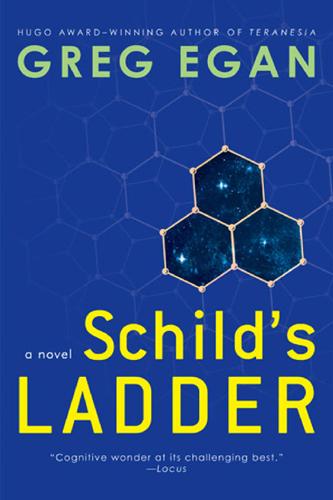
Schild's Ladder
by
Greg Egan
Published 31 Dec 2003
The shadow now dominated the view completely, a sight as overwhelming as the border from Pachner, but its exact form remained elusive. "We have to get those probes to go faster," Mariama complained. A tiny patch of color and detail appeared suddenly at the center of the object, spreading slowly through the grayness. The framing effect was confusing; Tchicaya found it harder than ever to interpret the probe image. Things that might have been xennobes were moving around on a roughly spherical surface; the scape labeled them as being hundreds of times larger than the rabbits, but they looked like mites crawling over an elephant.
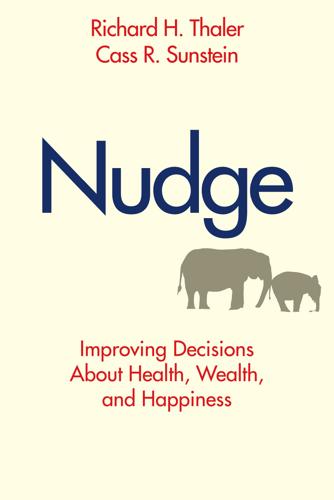
Nudge: Improving Decisions About Health, Wealth, and Happiness
by
Richard H. Thaler
and
Cass R. Sunstein
Published 7 Apr 2008
The Automatic System thinks: “A significant number of people are dead, and I might be one of them!” In numerous experiments, people react very differently to the information that “ninety of one hundred are alive” than to the information that “ten of one hundred are dead”—even though the content of the two statements is exactly the same. Even experts are subject to framing effects. When doctors are told that “ninety of one hundred are alive,” they are more likely to recommend the operation than if told that “ten of one hundred are dead.”14 Framing matters in many domains. When credit cards started to become popular forms of payment in the 1970s, some retail merchants wanted to charge different prices to their cash and credit card customers.
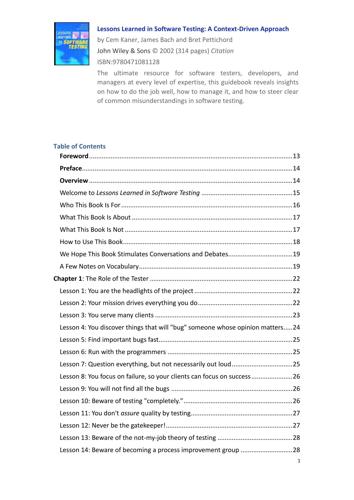
Lessons-Learned-in-Software-Testing-A-Context-Driven-Approach
by
Anson-QA
If I can readily bring to mind a scenario in which a user will behave in a certain way, I will also tend to think that behavior is more likely. Primacy bias. I will give more credence to the first observations I make. Recency bias. I will give more credence to the most recent observations I make. Framing effect. My reaction to a bug report is strongly related to how it's phrased, regardless of what it means. Prominence bias. I will give more weight to the opinions of users I happen to know. 41 Representativeness bias. I expect that small problems probably have small causes, whereas large problems require large causes.
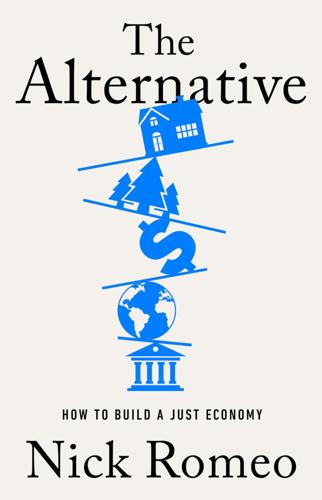
The Alternative: How to Build a Just Economy
by
Nick Romeo
Published 15 Jan 2024
If you have some knowledge of history and philosophy, the so-called revolution in behavioral economics over the past few decades appears less revolutionary. Many major insights of behavioral economics are rediscoveries of patterns already identified by ancient philosophers. Plato’s dialogues depict and analyze the cognitive-emotional processes that behavioral economics now calls confirmation bias, availability bias, framing effects, loss aversion, representativeness heuristic, and anchoring.4 There is some value in establishing these patterns with the methods of experimental psychology, using double-blind studies and populations from around the world. But it’s striking that some of the more celebrated intellectual achievements of economics are largely a rediscovery of processes depicted by philosophers and novelists.
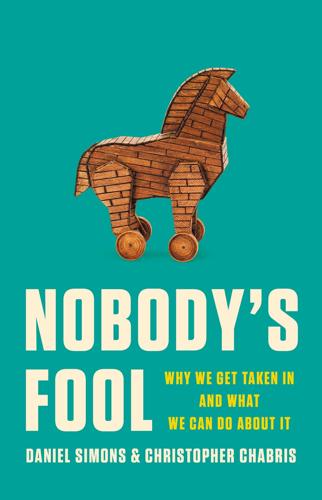
Nobody's Fool: Why We Get Taken in and What We Can Do About It
by
Daniel Simons
and
Christopher Chabris
Published 10 Jul 2023
If you’re having trouble imagining how voters could be so unfamiliar with the issues and so uncommitted to particular positions and candidates, consider this: The morning after the 2016 US presidential election, one of us overheard two workers in a sandwich shop trying to figure out what candidates had been running, which one had won, and why either of them should really care. 15. This general idea is also supported by research on framing effects in judgments, e.g., P. Slovic, “The Construction of Preference,” American Psychologist 50 (1995): 364–371 [https://doi.org/10.1037/0003-066X.50.5.364]. 16. E. Trouche, P. Johansson, L. Hall, and H. Mercier, “The Selective Laziness of Reasoning,” Cognitive Science 40 (2016): 2122–2136 [https://doi.org/10.1111/cogs.12303]. 17.
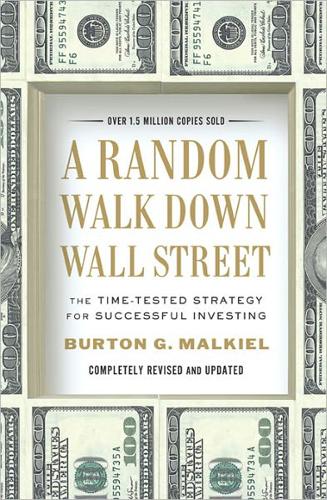
A Random Walk Down Wall Street: The Time-Tested Strategy for Successful Investing
by
Burton G. Malkiel
Published 10 Jan 2011
Note that the expected values of the two alternatives are the same—that is, a loss of $750. But almost 90 percent of the subjects tested chose alternative (2), the gamble. In the face of sure losses, people seem to exhibit risk-seeking behavior. Kahneman and Tversky also discovered a related and important “framing” effect. The way choices are framed to the decision maker can lead to quite different outcomes. They posed the following problem. Imagine that the U.S. is preparing for the outbreak of an unusual Asian disease, which is expected to kill 600 people. Two alternative programs to combat the disease have been proposed.

The Undoing Project: A Friendship That Changed Our Minds
by
Michael Lewis
Published 6 Dec 2016
The changes Sunstein made had a unifying theme: They sprang directly or indirectly from the work of Danny and Amos. You couldn’t say that Danny and Amos’s work led President Obama to ban federal employees from texting while driving, but it wasn’t hard to draw a line from their work to that act. The federal government now became sensitive to both loss aversion and framing effects: People didn’t choose between things, they chose between descriptions of things. The fuel labels on new automobiles went from listing only miles per gallon to including the number of gallons a car consumed every hundred miles. What used to be called the food pyramid became MyPlate, a graphic of a dinner plate with divisions for each of the five food groups, and it was suddenly easier for Americans to see what made for a healthy diet.
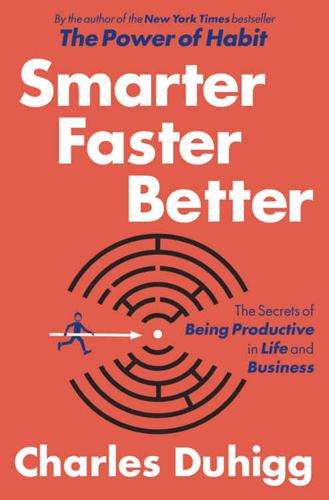
Smarter Faster Better: The Secrets of Being Productive in Life and Business
by
Charles Duhigg
Published 8 Mar 2016
question was framed In an email sent in response to fact-checking questions, the author of this study, Stephen Hoch, wrote: “The only other thing that I might add is that old ideas can get in the way of new ideas, creating interference and essentially blocking the thought process. One way to overcome the interference is to take a break so that the old ideas die down in terms of their salience.” hard to dislodge Irwin P. Levin, Sandra L. Schneider, and Gary J. Gaeth, “All Frames Are Not Created Equal: A Typology and Critical Analysis of Framing Effects,” Organizational Behavior and Human Decision Processes 76, no. 2 (1998): 149–88; Hilary A. Llewellyn-Thomas, M. June McGreal, and Elaine C. Thiel, “Cancer Patients’ Decision Making and Trial-Entry Preferences: The Effects of ‘Framing’ Information About Short-Term Toxicity and Long-Term Survival,” Medical Decision Making 15, no. 1 (1995): 4–12; David E.
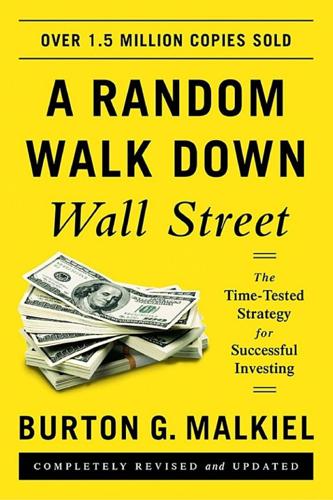
A Random Walk Down Wall Street: The Time-Tested Strategy for Successful Investing (Eleventh Edition)
by
Burton G. Malkiel
Published 5 Jan 2015
Note that the expected values of the two alternatives are the same—that is, a loss of $750. But almost 90 percent of the subjects tested chose alternative (2), the gamble. In the face of sure losses, people seem to exhibit risk-seeking behavior. Kahneman and Tversky also discovered a related and important “framing” effect. The way choices are framed to the decision maker can lead to quite different outcomes. They posed the following problem. Imagine that the U.S. is preparing for the outbreak of an unusual Asian disease, which is expected to kill 600 people. Two alternative programs to combat the disease have been proposed.
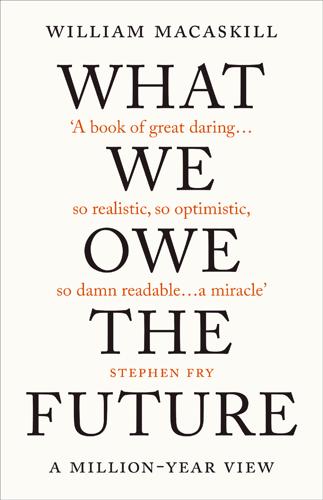
What We Owe the Future: A Million-Year View
by
William MacAskill
Published 31 Aug 2022
Although there have been many surveys on attitudes towards genetic enhancement (a recent systematic review included forty-one studies), it’s difficult to find reliable, comparable data for multiple countries (i.e., large studies that asked people in multiple countries the same question). This is important because it seems likely that questions about such a controversial, technical subject are vulnerable to respondent misunderstanding and framing effects. Still, it’s telling that a Pew Research survey found that support for nontherapeutic genetic enhancement did not exceed 20 percent in any North American or European country, while support across Asia was much more variable and higher on average. The bioethicist Darryl Macer writes that researchers have generally found higher support for genetic screening and gene therapy practices among respondents in China, India, and Thailand than in other Asian countries (Macer 2012).

Behave: The Biology of Humans at Our Best and Worst
by
Robert M. Sapolsky
Published 1 May 2017
Zogmaister et al., “The Impact of Loyalty and Equality on Implicit Ingroup Favoritism,” Group Processes & Intergroup Relations 11 (2008): 493. 33. J. Christensen and A. Gomila, “Moral Dilemmas in Cognitive Neuroscience of Moral Decision-Making: A Principled Review,” Nsci Biobehav Rev 36 (2012): 1249; L. Petrinovich and P. O’Neill, “Influence of Wording and Framing Effects on Moral Intuitions,” Ethology and Sociobiology 17 (1996): 145; R. O’Hara et al., “Wording Effects in Moral Judgments,” Judgment and Decision Making 5 (2010): 547; R. Zahn et al., “The Neural Basis of Human Social Values: Evidence from Functional MRI,” Cerebral Cortex 19 (2009): 276. 34.
…
Singer, “Famine, Affluence, and Morality,” Philosophy and Public Affairs 1 (1972) 229. 22. D. A. Smalia et al., “Sympathy and Callousness: The Impact of Deliberative Thought on Donations to Identifiable and Statistical Victims,” Organizational Behav and Hum Decision Processes 102 (2007): 143; L. Petrinovich and P. O’Neill, “Influence of Wording and Framing Effects on Moral Intuitions,” Ethology and Sociobiology 17 (1996): 145; L. Petrinovich et al., “An Empirical Study of Moral Intuitions: Toward an Evolutionary Ethics,” JPSP 64 (1993): 467; R. E. O’Hara et al., “Wording Effects in Moral Judgments,” Judgment and Decision Making 5 (2010): 547. 23. A.
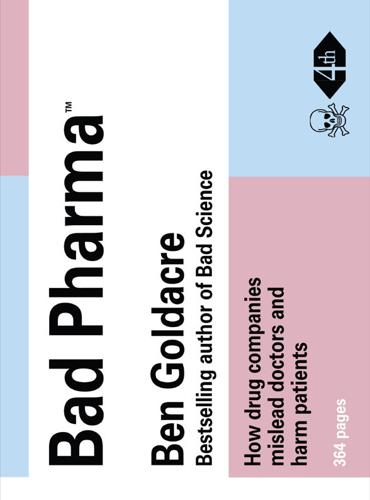
Bad Pharma: How Medicine Is Broken, and How We Can Fix It
by
Ben Goldacre
Published 1 Jan 2012
Arch Intern Med. 2011 Jun 27;171(12):1100–7. 35 I recommend this book as an introduction to ‘shared decision making’ (I helped on one chapter): Gigerenzer G, Muir G. Better Doctors, Better Patients, Better Decisions: Envisioning Health Care 2020. 1st ed. MIT Press; 2011. 36 Malenka DJ, Baron JA, Johansen S, Wahrenberger JW, Ross JM. The framing effect of relative and absolute risk. J Gen Intern Med. 1993 Oct;8(10):543–8. 37 Bucher HC, Weinbacher M, Gyr K. Influence of method of reporting study results on decision of physicians to prescribe drugs to lower cholesterol concentration. BMJ. 1994 Sep 24;309(6957):761–4. 38 Fahey T, Griffiths S, Peters TJ.

The Problem of Political Authority: An Examination of the Right to Coerce and the Duty to Obey
by
Michael Huemer
Published 29 Oct 2012
For instance, whether I should break a promise depends upon whether my available alternatives would violate duties more stringent than the duty to keep that promise. 2 Courtois et al. 1999, part 1. 3 See Caplan n.d. for discussion of varieties of anarchism. For defenses of socialist anarchism, see Bakunin 1972; Kropotkin 2002. 4 See Tetlock 2005 on the difficulty of political prediction; but see also Caplan 2007a for a qualified defense of political experts. 5 For a sampling, see Tversky and Kahnemann 1986 on framing effects; Arkes and Blumer 1985 on the influence of sunk costs; Tversky 1969 on intransitive preferences; and the various papers in Kahneman et al. 1982 and Gilovich et al. 2002. 6 Philosophers often understand the principle of charity as the principle that, in interpreting others, one must ascribe mostly true beliefs to them (Davidson 1990, 129–30).

Spies, Lies, and Algorithms: The History and Future of American Intelligence
by
Amy B. Zegart
Published 6 Nov 2021
For more about the use of these and other process-based methods in business settings and intelligence analysis, see Rice and Zegart, Political Risk, 177–181. For academic analyses of the efficacy of process-based approaches, see Gideon Keren, “Cognitive aids and debasing methods: Can cognitive pills cure cognitive ills,” Advances in Psychology 68 (1990): 523–52; Fei-Fei Cheng and Chin-Shan Wu, “Debiasing the framing effect: The effect of warning and involvement,” Computer Science 49, no. 3 (June 2010): 328–34; Lee Ross, Mark R. Lepper, and Michael Hubbard, “Perseverance in self-perception and social perception: Biased attributional processes in the debriefing paradigm,” Journal of Personality and Social Psychology 32, no. 5 (1975): 880–92; Richard P.
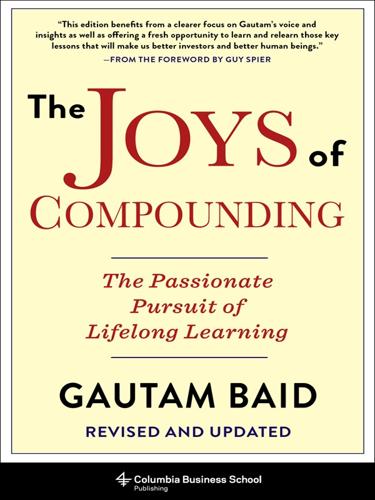
The Joys of Compounding: The Passionate Pursuit of Lifelong Learning, Revised and Updated
by
Gautam Baid
Published 1 Jun 2020
Similarly, consider an example of winning $1,000 and then losing $900 of it, versus losing $1,000 and winning $900 back—we are likely to be happier that we “only” lost $100, versus the outcome in which we “only” won $100. Framing is an outcome of our aversion to losses. Evolution has programmed our brain to seek loss minimization instead of gain maximization. In investing, narrow framing, a variant of the framing effect, is our inability to zoom out in a given situation. We like winning more than losing, and we keep an internal score for each stock in our portfolio. We maintain a separate mental account for each of our stocks, and we want to close every future sale transaction only with a gain. Instead of looking at overall portfolio performance, we try to gain from every single stock.
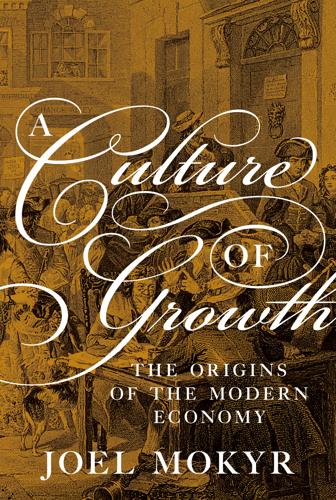
A Culture of Growth: The Origins of the Modern Economy
by
Joel Mokyr
Published 8 Jan 2016
But clearly government-controlled entities, such as schools and the military, can reproduce certain elements of socialization including a belief in punctuality, discipline, temperance, and the virtuousness of obedience, hard work, and technology.9 Salient events bias: Highly dramatic and traumatic events can have a discontinuous effect on culture through powerful framing effects. Such catastrophes as the Black Death, the Holocaust, or 9/11 changed ideology and beliefs through their powerful challenge to existing beliefs. Such salient events are especially important for political ideology and the area of social “values” that pertain to the role of the state. Major and dramatic failures of the free market create more support for a regulated and managed economy (as happened in the industrialized West during the Great Depression of the 1930s), whereas major failures of a managed economy such as the former Soviet bloc increased ideological support for a free market economy both in the affected areas and in those competing with them.10 Biases should not be regarded as parametrically given; they are time-variant and historically contingent.

How Emotions Are Made: The New Science of the Mind and Brain
by
Lisa Feldman Barrett
Published 6 Mar 2017
Clinical Psychological Science 2 (4): 514–531. Seminowicz, D. A., H. S. Mayberg, A. R. McIntosh, K. Goldapple, S. Kennedy, Z. Segal, and S. Rafi-Tari. 2004. “Limbic-Frontal Circuitry in Major Depression: A Path Modeling Metanalysis.” Neuroimage 22 (1): 409–418. Seo, M.-G., B. Goldfarb, and L. F. Barrett. 2010. “Affect and the Framing Effect Within Individuals Across Time: Risk Taking in a Dynamic Investment Game.” Academy of Management Journal 53: 411–431. Seruga, Bostjan, Haibo Zhang, Lori J. Bernstein, and Ian F. Tannock. 2008. “Cytokines and Their Relationship to the Symptoms and Outcome of Cancer.” Nature Reviews Cancer 8 (11): 887–899.
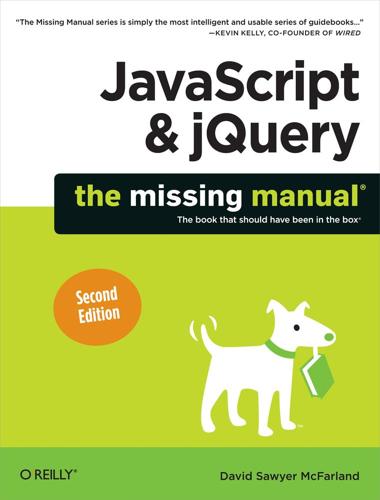
JavaScript & jQuery: The Missing Manual
by
David Sawyer McFarland
Published 28 Oct 2011
For example, since the debugger doesn’t keep track of a counter variable in a for loop (For Loops), you can add this variable, and as you go step by step through the loop, you can see how the counter changes each time through the loop. You can think of this Watch list as a kind of a continual console.log() command. It prints out the value of a particular variable or expression at the time a particular line of code is run. The Watch list offers valuable insight into your program, providing a kind of freeze-frame effect so you can find exactly where in your script an error occurs. For example, if you know that a particular variable holds a number value, you can go step by step through the script and see what value gets stored in the variable when it’s first created and see how its value gets modified as the program runs.
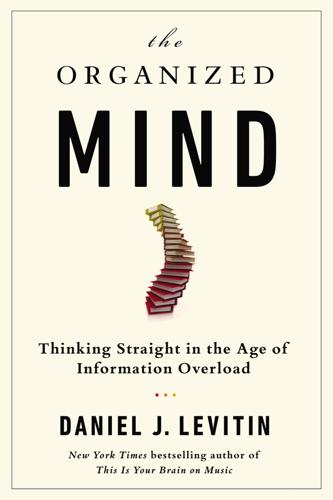
The Organized Mind: Thinking Straight in the Age of Information Overload
by
Daniel J. Levitin
Published 18 Aug 2014
In the first pair of scenarios, our attention is apparently drawn to the difference in five-year outcomes, where 34% are alive from surgery but only 22% from radiation. The framing of the second pair of scenarios apparently draws our attention to the difference in risk of the procedure itself: Radiation reduces the risk of immediate death from 10% to 0%. The framing effect was observed not just in patients but in experienced physicians and statistically sophisticated businesspeople. Another aspect of framing is that most of us are better with pictures than with raw numbers, one of the motivations for changing the university calculus curriculum to use graphic-based presentations of difficult material.
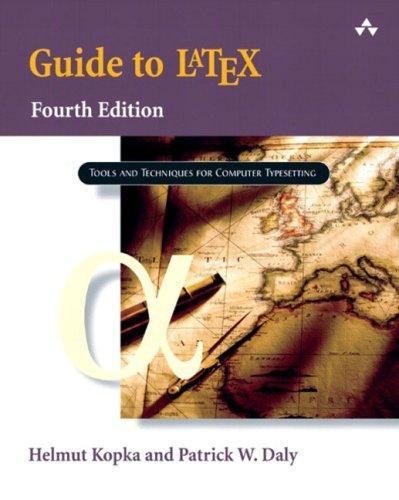
Guide to LaTeX
by
Helmut Kopka
and
Patrick W. Daly
Published 15 Feb 2008
The opposite, a parbox within an LR box, is also possible, and is easy to visualize if one keeps in mind that every box is a unit, treated by LATEX as a single character of the corresponding size. A parbox inside an \fbox command has the effect that the entire parbox is framed. The present structure was made with \fbox{\fbox{\parbox{10cm}{A parbox...}}} This is a parbox of width 10 cm inside a framebox inside a second framebox, which thus produces the double framing effect. Enclosing a parbox inside a \raisebox allows vertical displacements of any desired amount. The two boxes here both have positioning [b], but the one at the right has been produced with: abcdefghi jklmnopqr \raisebox{1cm}{\begin{minipage}[b]{2.5cm} stuvwxyz a b c d e ... x y z\\ baseline \underline{baseline} \end{minipage} } which displaces it upwards by 1 cm. baseline A very useful structure is one in which minipage environments are positioned relative to one another inside an enclosing minipage.

Global Catastrophic Risks
by
Nick Bostrom
and
Milan M. Cirkovic
Published 2 Jul 2008
· 4· M i lle n n i a l te n d e n cies i n res p o n ses to a p ocaly ptic th reats ]ames ]. Hughes 4.1 Introduction Aaron Wildavsky proposed in 1987 that cultural orientations such as egalitarianism and individualism frame public perceptions of technological risks, and since then a body of empirical research has grown to affirm the risk framing effects of personality and culture (Dake, 1991; Gastil et al., 2005; Kahan, 2008). Most of these studies , however, have focused on relatively mundane risks, such as handguns, nuclear power, genetically modified food, and cellphone radiation. In the contemplation of truly catastrophic risks - risks to the future of the species from technology or natural threats - a different and deeper set of cognitive biases come into play, the millennia!

Artificial Intelligence: A Modern Approach
by
Stuart Russell
and
Peter Norvig
Published 14 Jul 2019
It seems that people have ambiguity aversion: A gives you a 1/3 chance of winning, while B could be anywhere between 0 and 2/3. Similarly, D gives you a 2/3 chance, while C could be anywhere between 1/3 and 3/3. Most people elect the known probability rather than the unknown unknowns. Yet another problem is that the exact wording of a decision problem can have a big impact on the agent’s choices; this is called the framing effect. Experiments show that people like a medical procedure that is described as having a “90% survival rate” about twice as much as one described as having a “10% death rate,” even though these two statements mean exactly the same thing. This discrepancy in judgment has been found in multiple experiments and is about the same whether the subjects are patients in a clinic, statistically sophisticated business school students, or experienced doctors.
…
E., 515, 667, 1086 Fortran, 807 forward-backward, 488, 795 FORWARD-BACKWARD, 488 forward chaining, 248, 248–249, 265, 304–311, 329 forward checking, 178, 178 forward kinematics, 947 forward message, 487 forward pruning, 205 forward search for planning, 366–368 Foster, G., 901, 1090 Fouhey, D., 1015, 1095 four-color map problem, 188, 1034 Fourier, J., 188, 1095 Fowlkes, C., 1028, 1105 Fox, C., 560, 1095 Fox, D., 667, 984, 987, 1089, 1095, 1112, 1115 Fox, M. S., 401, 1095 FPGA, 45 frame, 41, 359 FrameNet (lexical database), 357 frame problem, 257, 267, 268 representational, 257 framing effect, 529 Francis, J., 549, 1101 Franco, J., 266, 1095 Francois-Lavet, V., 871, 1095 Francon, O., 137, 161, 1106 Frank, E., 738, 1117 Frank, I., 222, 1095 Frank, J., 47, 1086 Frank, R. H., 1051, 1095 Frankenstein, 1052 Frans, K., 873, 1095 Franz, A., 903, 1095 Frasconi, R, 837, 1087 FREDDY (robot), 125, 162, 983 Fredkin Prize, 222 Freeman, W., 476, 1116, 1117 Freer, C., 667, 1085 free space, 947 free will, 24 Frege, G., 26, 266, 296, 328, 1095 Freitag, D., 905, 906, 1091, 1095 frequentism, 426 Freuder, E.
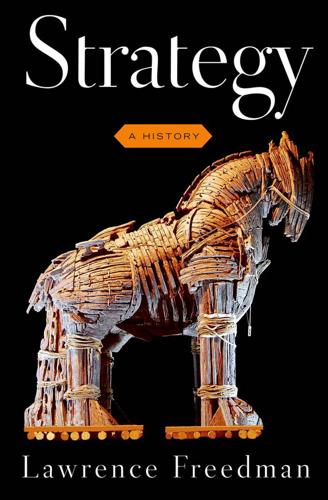
Strategy: A History
by
Lawrence Freedman
Published 31 Oct 2013
Probabilities are routinely miscalculated, so … people … assume that outcomes which are very probable are less likely than they really are, that outcomes which are quite unlikely are more likely than they are, and that extremely improbable, but still possible, outcomes have no chance at all of happening. They also tend to view decisions in isolation, rather than as part of a bigger picture.13 Of particular importance were “framing effects.” These were mentioned earlier as having been identified by Goffman and used in explanations of how the media helped shape public opinion. Framing helped explain how choices came to be viewed differently by altering the relative salience of certain features. Individuals compared alternative courses of action by focusing on one aspect, often randomly chosen, rather than keep in the frame all key aspects.14 Another important finding concerned loss aversion.